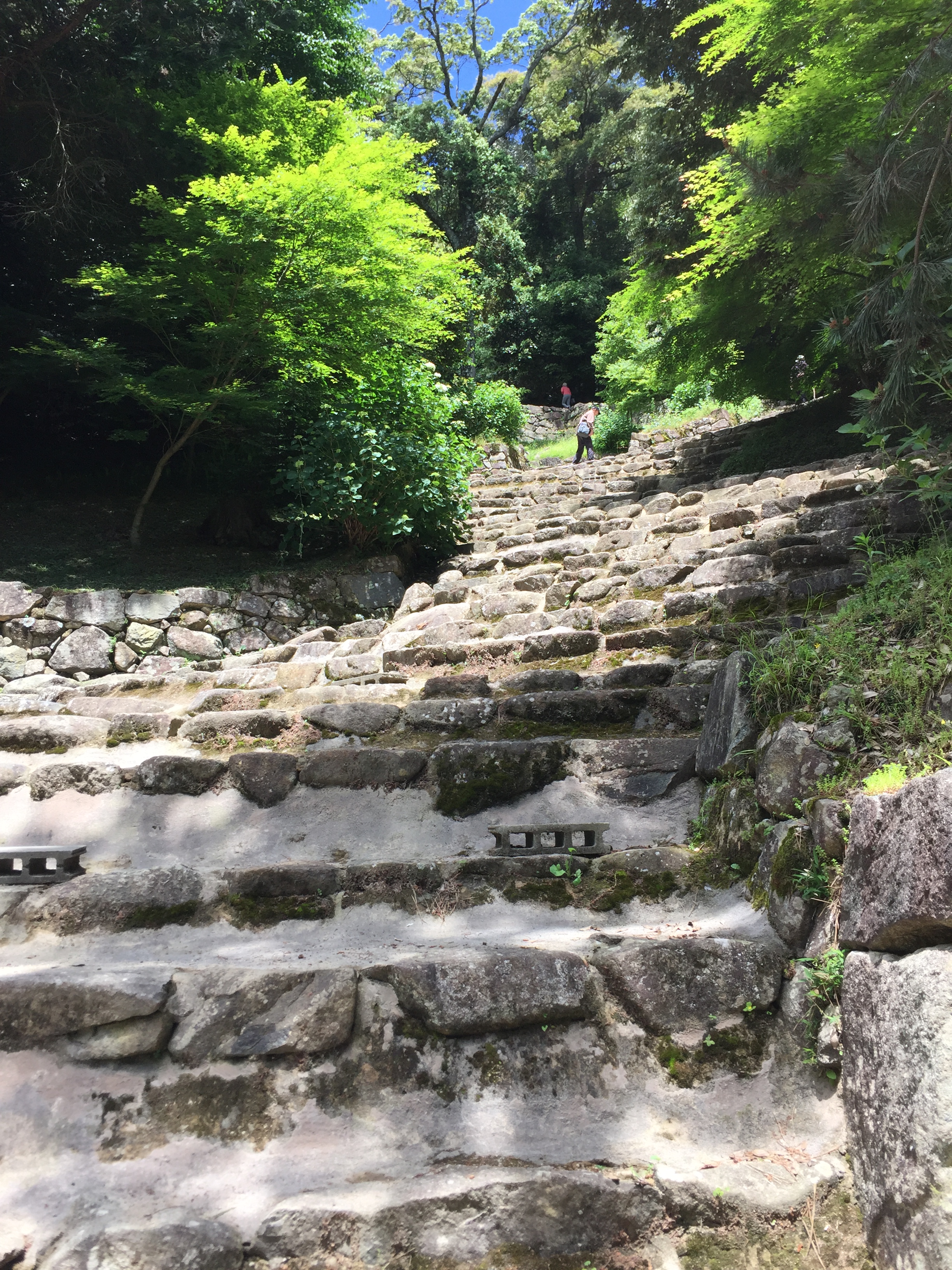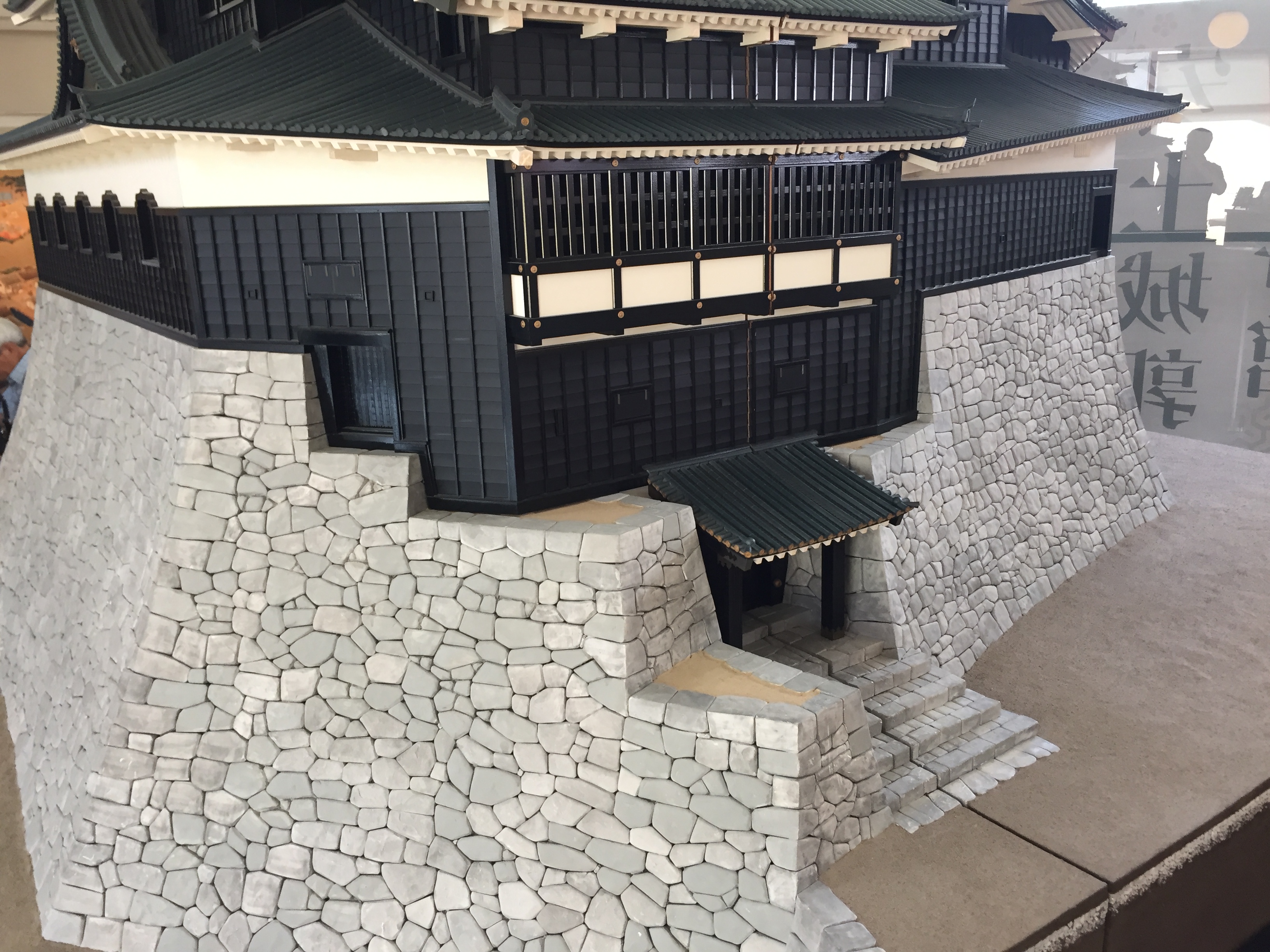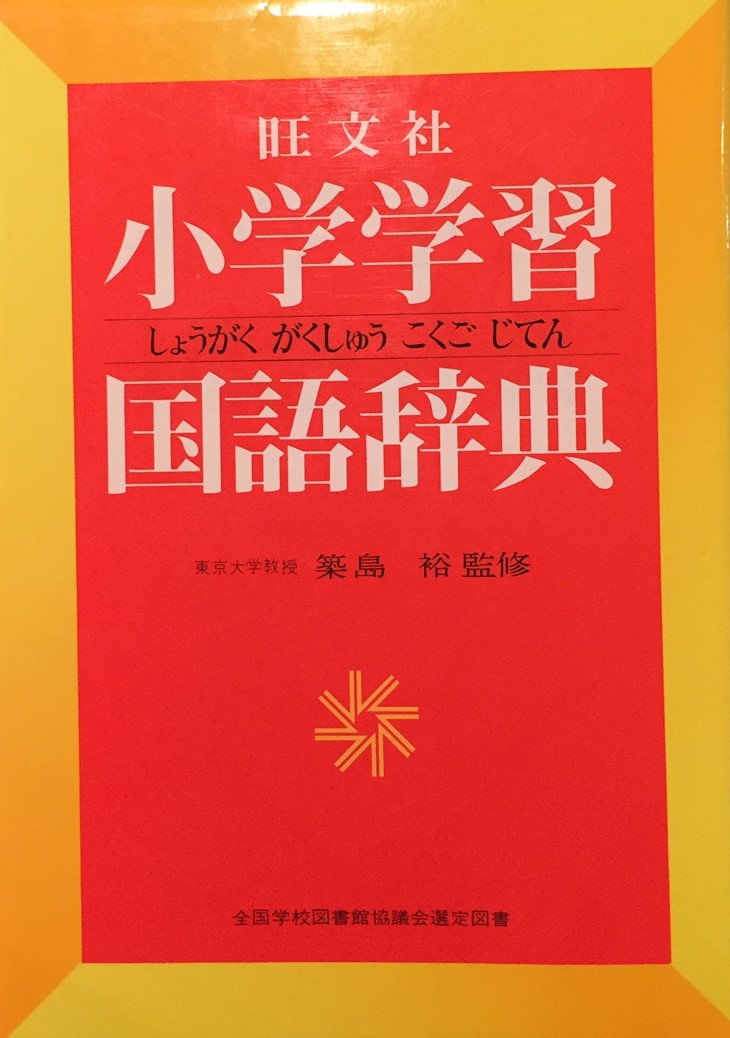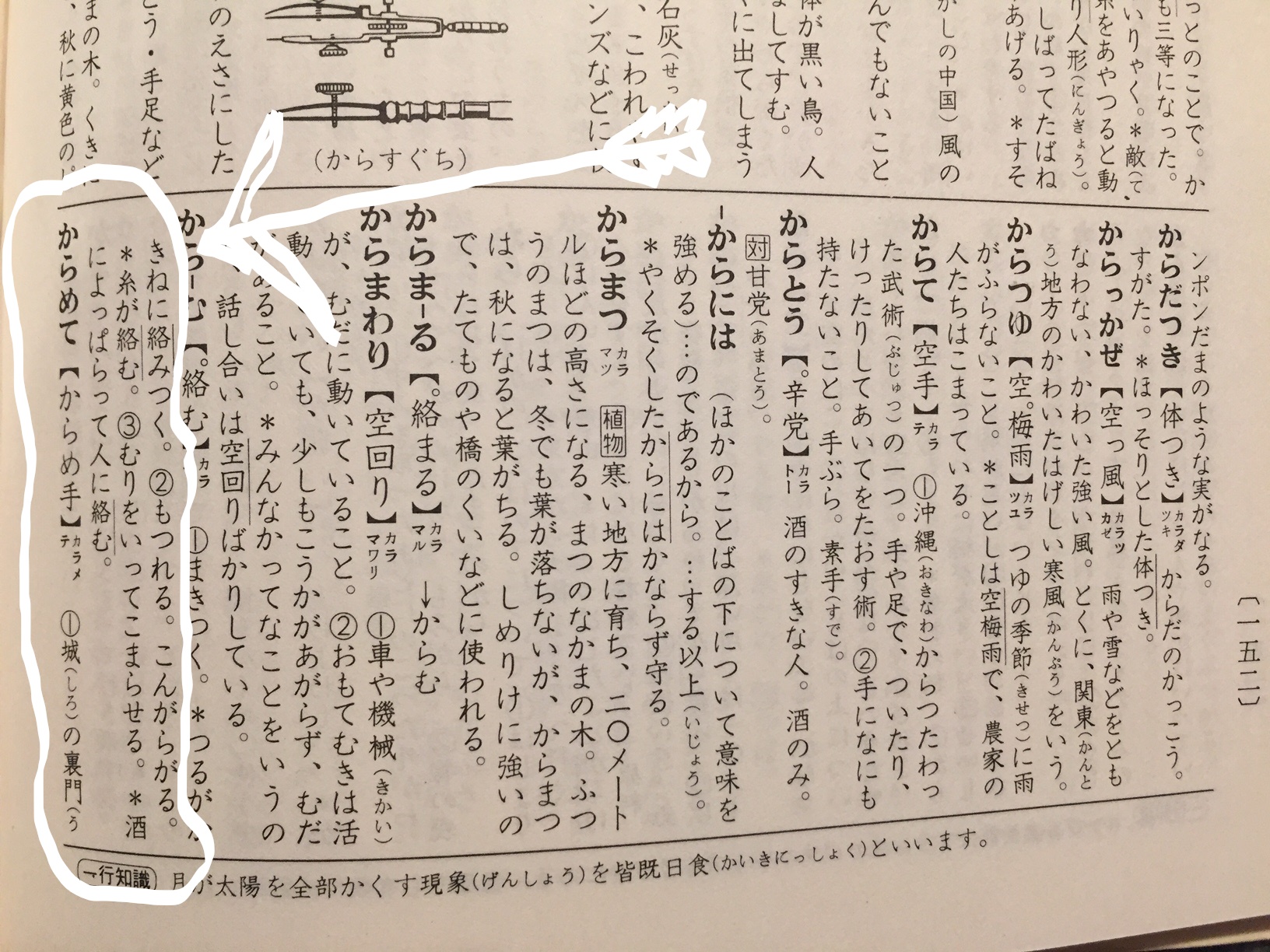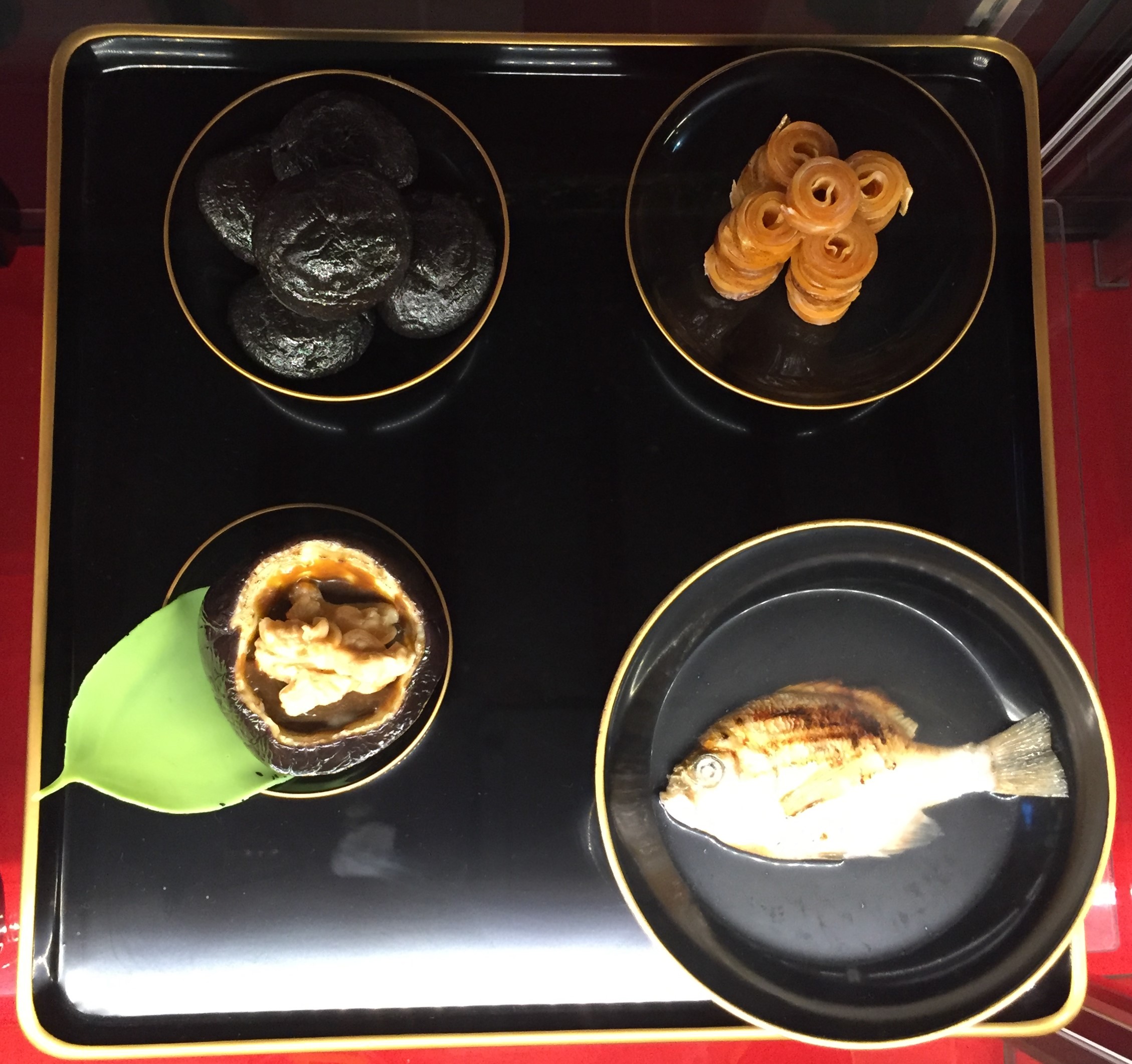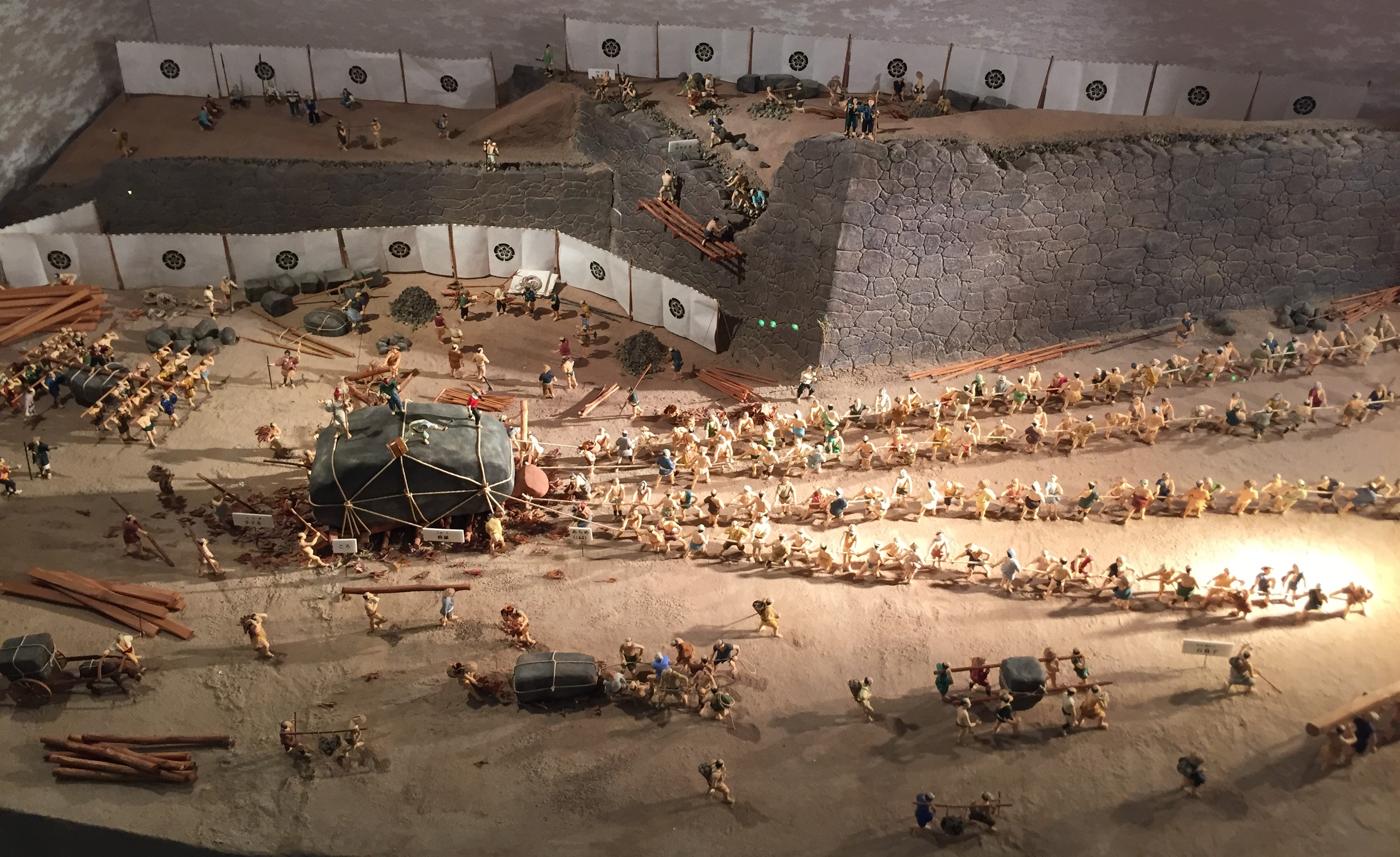AZ II Buildings Series: Azuchi Castle Copyright © William Stong 2021
❸ After the castle officially “opened”: June 6, 1579 to June 21, 1582
- The History
As with the prior two “arbitrary” periods (Pre-construction and Construction), the Post-construction period involved incessant fighting. However, a key difference in tenor is that most of the fighting consisted of offensive campaigns from the core of Oda Nobunaga’s lands into surrounding fiefdoms.
There was one critical exception. In the fall of 1579, an intrigue involving Tokugawa Ieyasu’s wife seriously threatened this key alliance. Tokugawa’s wife was accused of conspiring with the Takeda against Oda. It was so serious that Tokugawa, after having his wife killed, reluctantly, and after pleading with Oda, ordered his eldest son, who was most probably innocent, to commit seppuku.
Oda had different commanders invade:
► Uesugi lands to the north
► Mōri and Mōri-allied lands to the southwest
► The remaining Miyoshi clan to the south on Awaji Island
The Ishiyama-Honganji surrendered and left their stronghold in May 1580.
Even the nearby and troublesome Iga province finally fell to massive Oda armies before the end of 1581 (on the Oda family’s fourth invasion).
In the spring of 1582, taking advantage of a demoralized and fractured Takeda clan, the Oda’s, supported by Tokugawa and Hojo in the east, crushed the Takeda and took control of their vast fiefdoms.
During this period, there were two celebratory events of note:
► April 11, 1581: Oda held a huge horse parade in Kyōto to impress the imperial court (and anybody else interested) with the massive military might of Oda Nobunaga.
► May-June 1582: After the elimination of the Takeda, Tokugawa hosted a victory procession through his lands for several weeks, followed by a lavish visit by Tokugawa to Azuchi castle.
During one of the banquets Oda hosted in honor of Tokugawa, a message was received from Toyotomi (Hashiba) Hideyoshi requesting aid because the Mōri were about to surround him as he besieged the Bitchu-Takamatsu castle. Oda was ecstatic. His response included orders to different commanders to immediately gather their armies and march into various campaigns radiating out from the lands he already controlled.
Oda would follow the armies heading toward Bitchu-Takamatsu to support Toyotomi. As soon as his orders for all the other campaigns were dispatched, Oda Nobunaga, with a small bodyguard and administrative staff, left Azuchi castle for Kyōto. He would spend one night there: first entertaining the imperial court, and then sleeping, as usual, at Honnōji.
- The Campaigns
NB: Font color legend.
❶ Green = Favorable to Oda
❷ Black = Neutral
❸ Red = Adverse to Oda
Summer of 1579: In Tanba province, Hatano Hideharu surrenders Yakami castle to Akechi Mitshuhide, ending a three-year fight. Hatano travels to Azuchi, where Oda Nobunaga has him executed via crucifixion on June 25, 1579.
September 9, 1579: Lady Tsukiyama, Tokugawa Ieyasu’s wife, is beheaded on the shore of Lake Sanaru, in Hamamatsu. Tokugawa confines his oldest son at Futamata castle. However, Oda is adamant that Nobuyasu be killed.
October 5, 1579: Explaining that his eldest son would feel obligated to avenge his mother’s death, Tokugawa orders his eldest son, Nobuyasu, to commit seppuku
October 1579: Araki Murashige secretly escapes from the besieged Arioka castle, abandoning his wife and children.
October 6–7, 1579: Still smarting from his defeat by the Iga the previous year, Oda’s second son, Nobukatsu, invades the Iga homelands. With three armies totaling 10,800 men, Nobukatsu attacks through three mountain passes. The Iga had learned of the plans and ambush the three columns as they move through the passes. Being much more familiar with the mountainous terrain, the Iga thrash the Oda. Nobukatsu’s armies retreat from Iga province.
When Oda Nobunaga finds out (Nobukatsu had not discussed the attack with his father), Nobunaga is furious and berates his son.
November 1579: In Bizen province, Ukita Naoie defects from the Mōri and pledges allegiance to Oda.
November 17, 1579 In Settsu province, Arioka castle finally falls and most of the Araki family are executed.
1580: Kuroda Kanbei formally gives Himeji castle to Hideyoshi who immediately remodels parts to make it a much stronger castle. Himeji becames Hideyoshi’s base of operations for the duration of the Chugoku campaign.
January 1580: In Harima province, Bessho Nagaharu commits seppuku and Miki castle surrenders, thus ending the long siege.
May 1580: With the help of an imperial order from Emperor Ogimachi, long, drawn-out negotiations end and Ishiyama-Honganji surrenders.
May 22, 1580: At the end of the long and difficult siege, Oda, in a rare instance of clemency, allows the defenders to march out, enroute to Kii province.
As part of the Chugoku campaign, Toyotomi Hideyoshi drives into Harima and Tajima provinces.
November 29, 1580: After a brief visit to report to Oda, Hideyoshi leaves Azuchi for the west.
Late 1580: Hideyoshi marches out of his base at Himeji castle in Harima province and moves north into Tajima province. Akechi Mitsuhide enters Tamba province.
Spring 1581: Hideyoshi drives north into Inaba province. Some lords declare for Oda, while Kikkawa Tsuneie resists.
April 11, 1581: In Kyōto, Oda Nobunaga stages a huge parade at the umaba (horse place) of the Imperial Palace.
May 1581: Hideyoshi begins the siege of Tottori castle, completely surrounding it with two walls. The first one is to keep the defenders in the castle and the second one is to protect the Oda men from any Mōri attack.
The daimyō of Bizen province, Ukita Naoie, wavers in his support of the Mōri clan. When he sees how strong Oda is becoming, he offers to surrender to Hideyoshi.
June 1581: Taking advantage of yet another sudden death of an enemy—this time Kawada Nagachika of the Uesugi clan—Oda’s army marches into Etchu province and takes control of almost all it.
The religious complex at Mt. Koya is harboring fugitives from defeated clans, such as the Araki. Oda sends messengers to resolve the issues but they are killed. Therefore, Oda orders the daimyo in Kawachi and Yamato provinces to besiege Mt. Koya.
August & October/November 1581: Supporting his second son, Nobukatsu, Oda Nobunaga marches into Iga with overwhelming forces and finally crushes the province.
September 30, 1581: Nobunaga launches a massive, coordinated invasion of Iga. This time, two Iga men had switched allegiance and serve as guides. Already controlling the provinces surrounding Iga, six Oda armies, totaling 42,000 men, attack through six different passes. Losing castles, shrines, and temples, the 10,000 defenders are pushed back until they are beseiged in Hijiyama castle in the north of the province and Kashiwara castle in the south. Both fall.
October 8, 1581: Kashiwara castle in south Iga capitulates, ending organized Iga resistance.
Early November 1581: Oda Nobunaga himself tours the conquered province and his group is ambushed in one smoldering village. Oda escapes injury but several others are killed. Leaving Iga province in Nobukatsu’s hands, Nobunaga returns to Azuchi.
November 21, 1581: In Inaba province, faced with starvation, Kikkawa Tsuneie sues for terms and commits seppuku to save the remaining defenders. Tottori castle surrenders to Hideyoshi.
December 1581: Under Oda’s orders, Toyotomi Hideyoshi captures Awaji province, in the Inland Sea between Shikoku and Honshu islands.
February 1, 1582: The daimyō of Bizen province, Ukita Naoie, dies of an illness and his son is only eight years old. This puts Bizen province under the influence of Hideyoshi.
March 7, 1582: Based on secret defections by Takeda lords, Oda Nobutada proposes to invade the Takeda homeland. Oda Nobunaga embraces the idea and orders Nobutada, his eldest son, to proceed.
March/April 1582: Nobutada invades and while many Takeda castles surrender, he encounters fighting deeper and deeper into Takeda lands.
Oda Nobunaga also enlists the help of Tokugawa and Hojo, who attack the Takeda lands from the east. The combined invasion forces are estimated at 100,000.
April 10, 1582: Oda Nobunaga leaves Azuchi castle for the front; the same day that Nobutada occupies Kofu which used to be the Takeda main castle before Takeda Katsuyori moved it earlier to nearby Shinpu.
April 13, 1582: Finally surrounded in the shadow of Tenmokuzan, Takeda Katsuyori, and his family, commit seppuku. The rest of his small group die fighting the troops of Oda Nobutada. This is the end of the Takeda clan. Oda takes over all the Takeda provinces.
April 17, 1582: Hideyoshi leaves Himeji castle with 20,000 soldiers and heads into Bitchu province. Enroute, he picks up the support of the Ukita clan which adds 10,000 men.
Over the next month, Hideyoshi pushes the enemy back. A Mōri vassal, Shimizu Muneharu, retreats into Bitchu-Takamatsu castle with about 3,000 men. Hideyoshi systematically takes the surrounding, smaller castles.
May 21, 1582: Oda Nobunaga returns to Azuchi Castle after a month-long victory possession through Tokugawa Ieyasu’s lands.
May 17, 1582: Hideyoshi besieges Bitchu-Takamatsu castle which sits on a plain with mountains at its back. Hideyoshi builds a massive embankment to hold the waters of a diverted river. The plain in front of the castle begins to fill with water.
June 1582: Hideyoshi sends a message to Oda Nobunaga requesting help since he, in turn, is surrounded by the Mōri. Oda Nobunaga issues orders:
-
- Akechi Mitsuhide is to immediately march to support Hideyoshi
- Other daimyō are also asked to march to Bitchu-Takamatsu
- Shibata Katsuie is told to press the attack against the Uesugi in the north
- Tokugawa is to watch the western provinces for possible problems
- Niwa Nagahide and Oda’s third son, Nobutaka, are to embark on their invasion of Shikoku
June 21, 1582: The Honnōji Incident (unplanned)
III. At the End
When Oda Nobunaga retired in the early morning hours of June 21, 1582, his commanders were:
► To the north, consolidating control of the Takeda lands
► To the northwest, invading the rest of the Uesugi lands
► To the south, heading an amphibious invasion of the island of Shikoku
► To the east, keeping an eye on the daimyō in the far northern provinces
► To the southwest, marching to the relief of Hideyoshi and to a showdown with the Mōri
Later in the day of June 21, Oda’s plan was to follow the armies marching west to ensure the fall of the Bitchu-Takamatsu castle and, with good strategy, tactics, and some luck, defeat the massed Mōri in one, massive strike.
The future looked brilliant for Oda Nobunaga. He would leave Honnōji in the morning.
Sources:
► A History of Japan, 1334–1615; © 1961; Sansom, George
► Sengoku Jidai. Nobunaga, Hideyoshi, and Ieyasu: Three Unifiers of Japan; © 2018; Chaplin, Danny
► Ninja: The True Story of Japan’s Secret Warrior Cult; © 1991; Turnbull, Stephen
► African Samurai: The True Story of Yasuke, a Legendary Black Warrior in Feudal Japan; © 2019; Lockley, Thomas (and Girard, Geoffrey)
► Shinsengumi Archives
► Samurai Archives
► Wikipedia
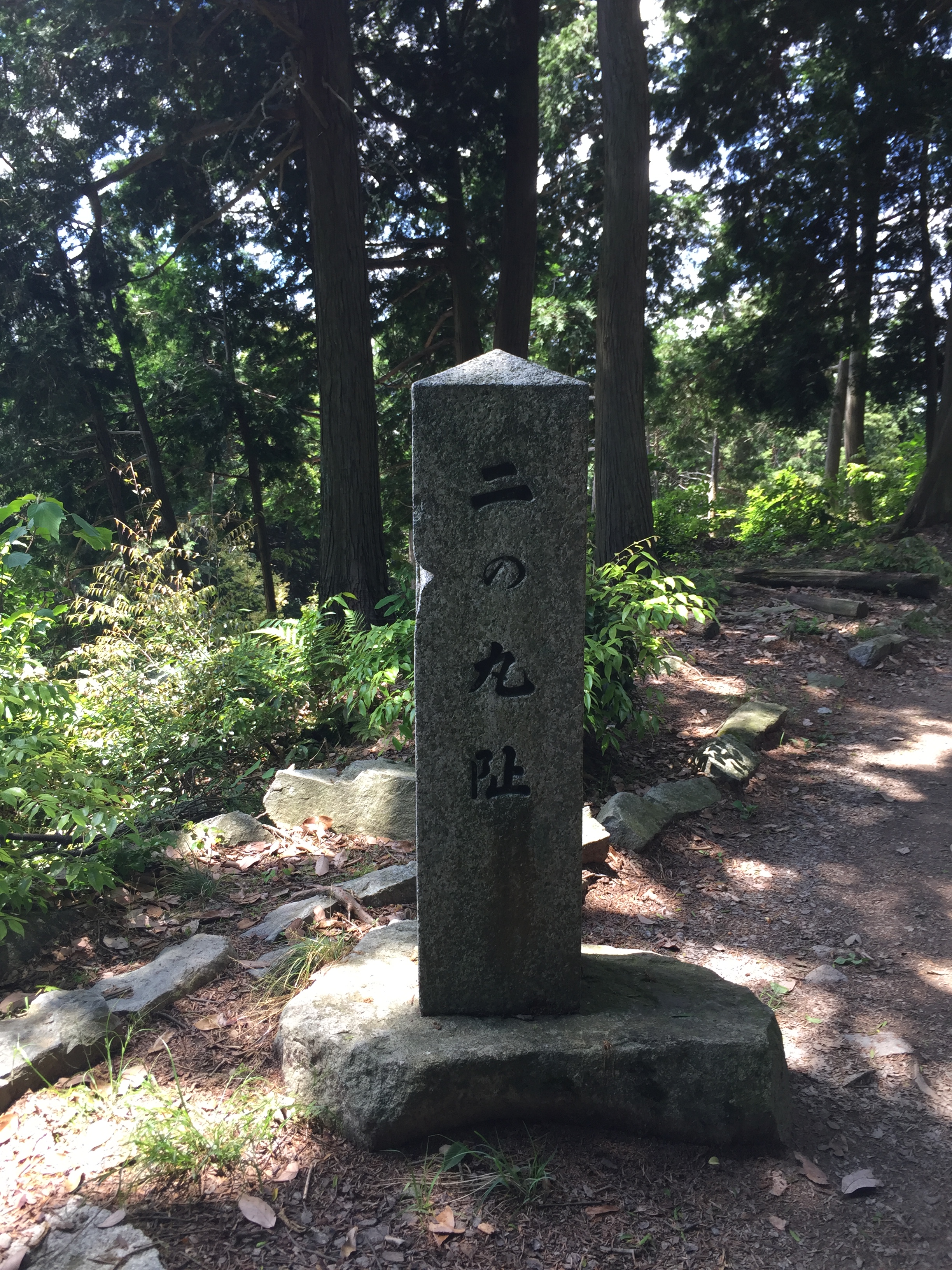
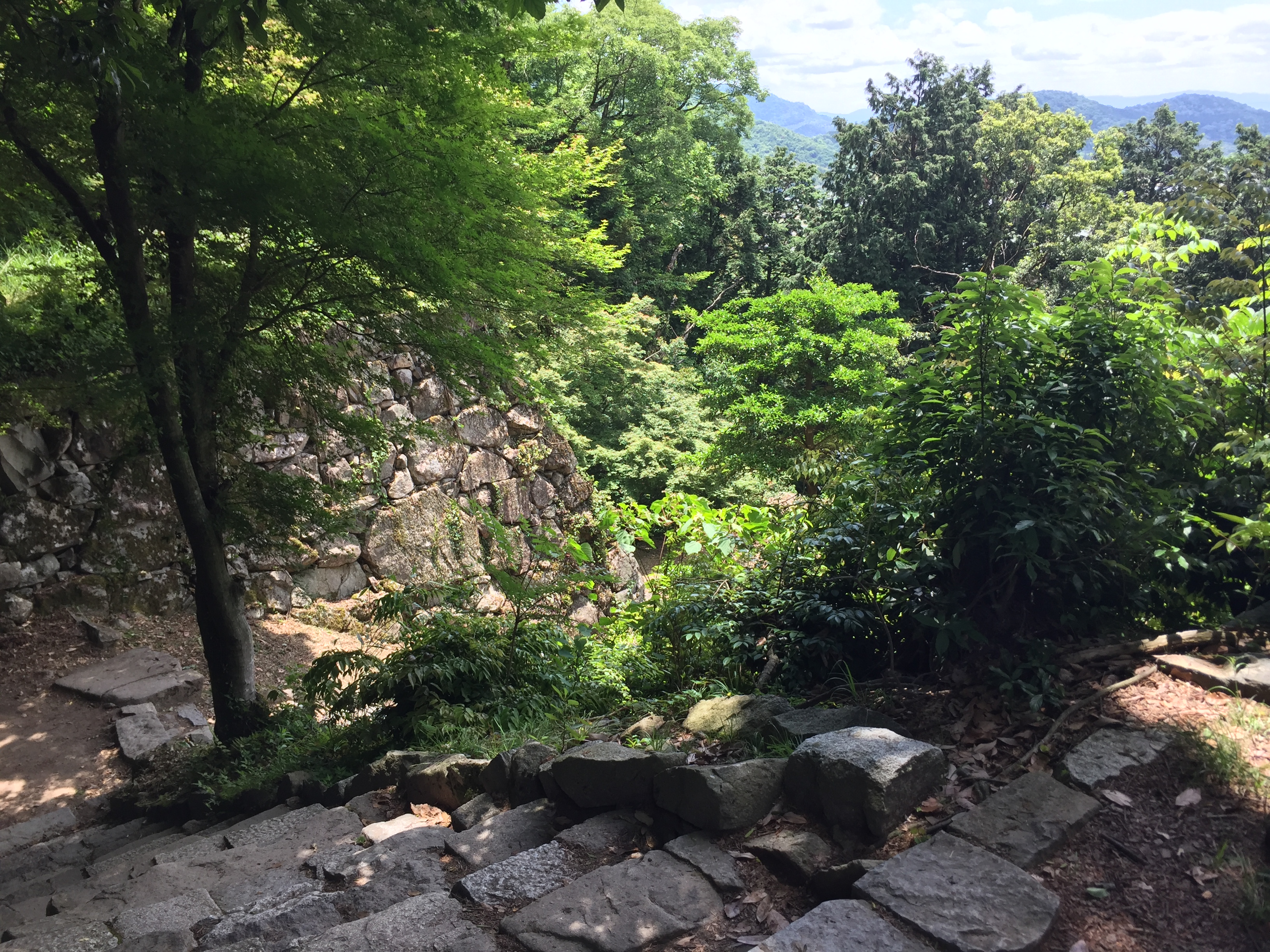
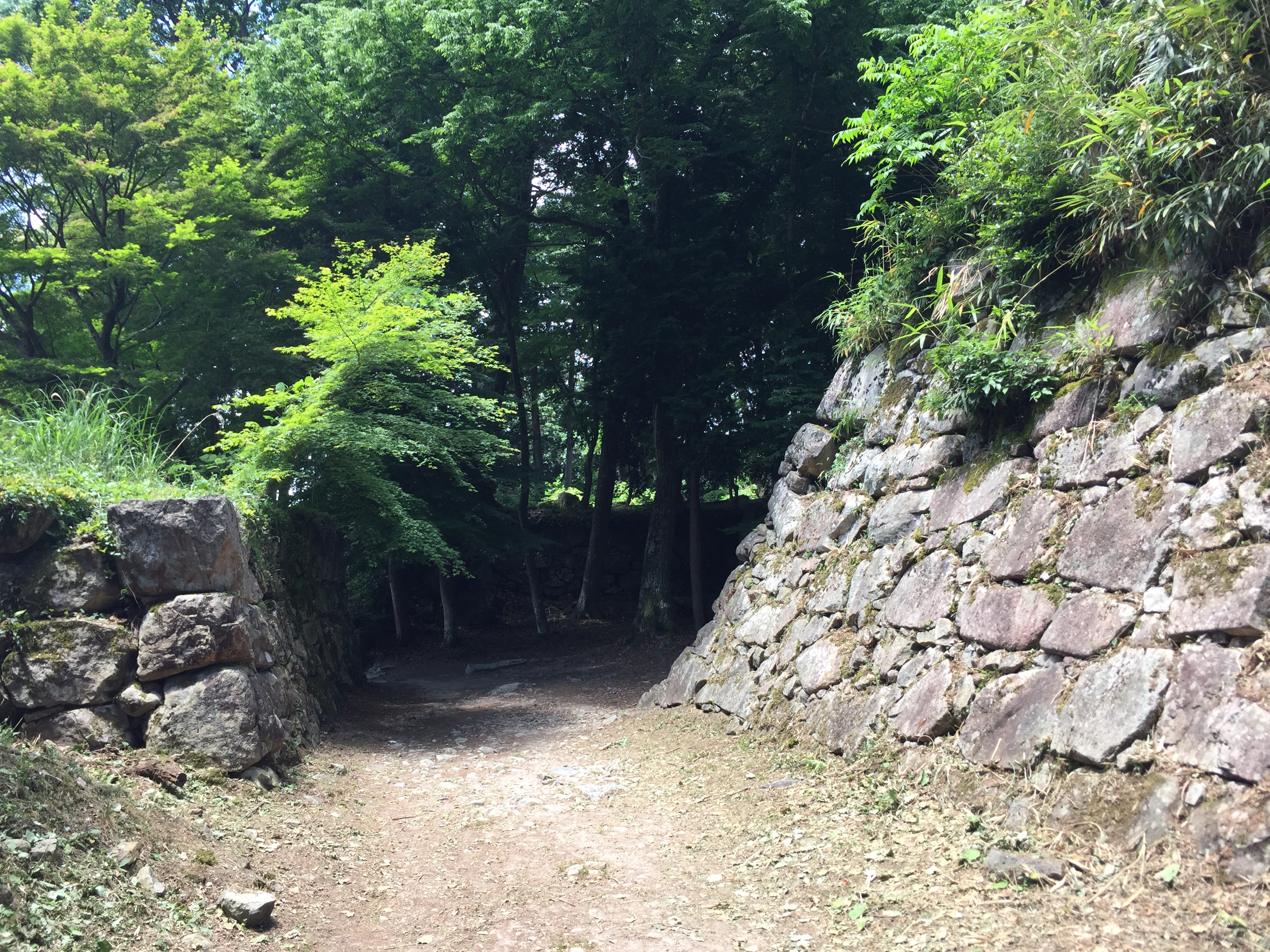
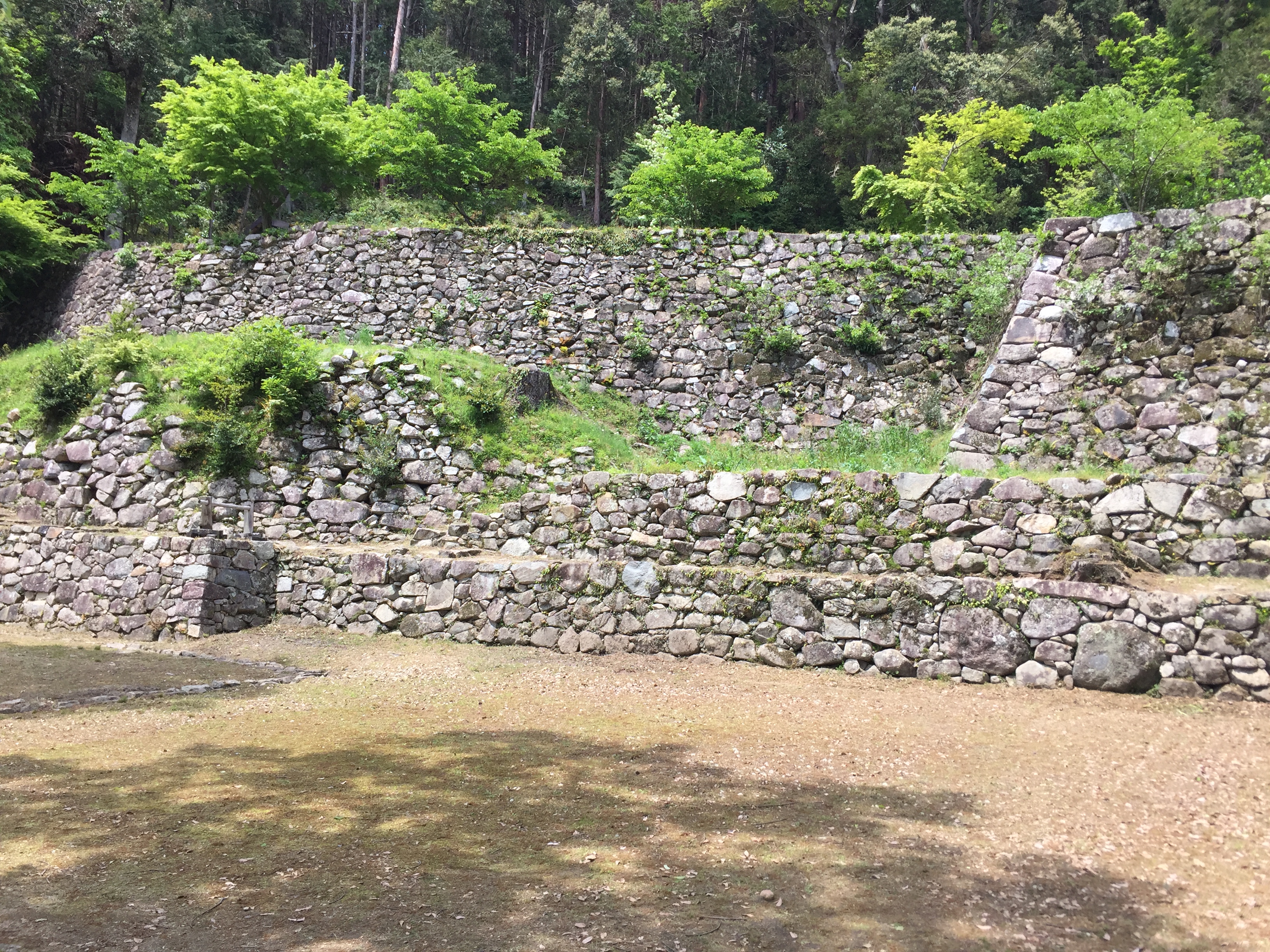
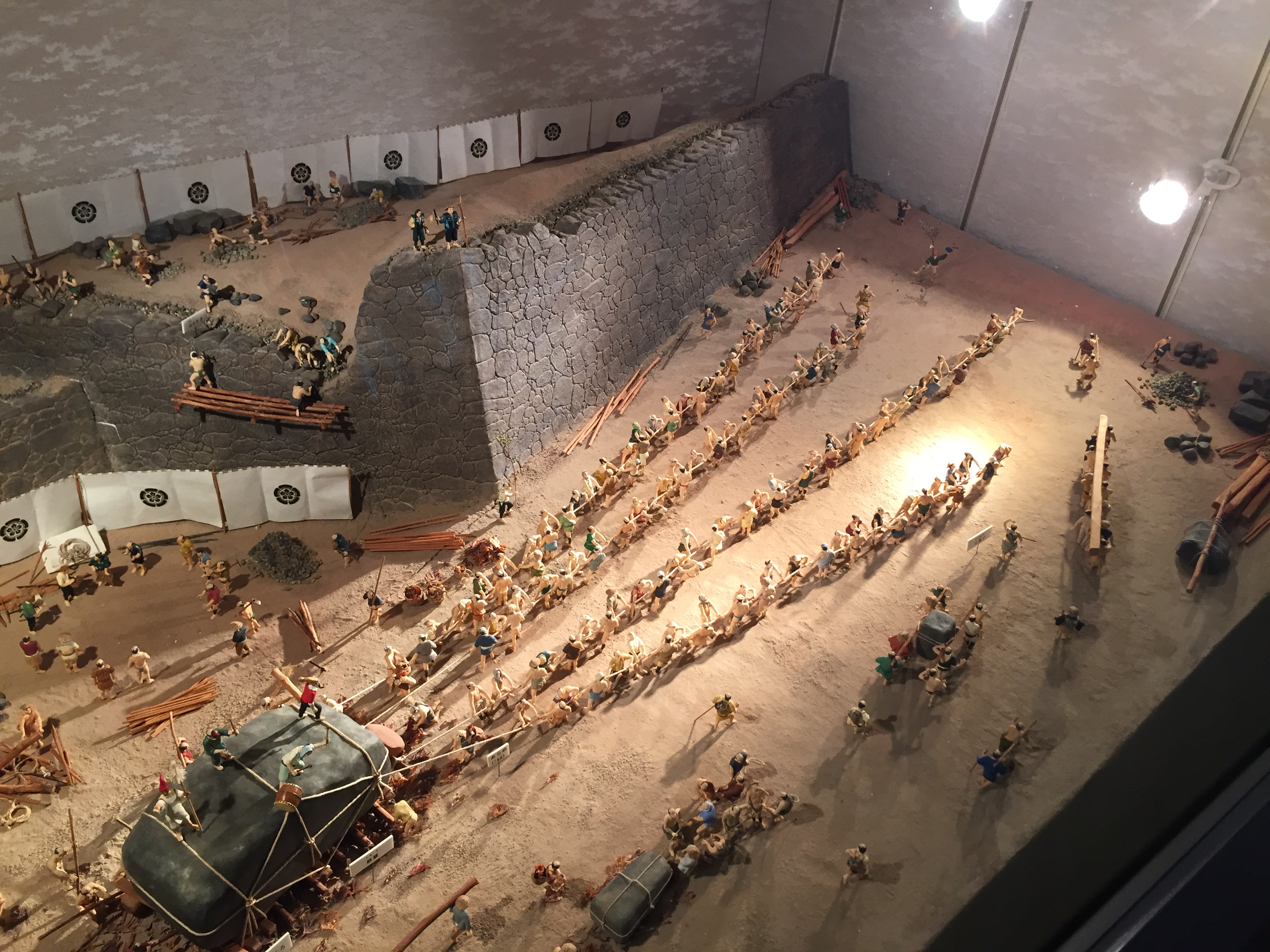
 The current configuration turns right onto the Onemichi and then continues as that road existed in 1582. The feature that impressed me the most is the Kuroganemon. Passing through the remains of this gate, which consists of right-angle turns flanked on both sides by steep stone walls, it is clear how difficult it would have been for attackers to get into the outer baileys—much less into the castle itself.
The current configuration turns right onto the Onemichi and then continues as that road existed in 1582. The feature that impressed me the most is the Kuroganemon. Passing through the remains of this gate, which consists of right-angle turns flanked on both sides by steep stone walls, it is clear how difficult it would have been for attackers to get into the outer baileys—much less into the castle itself.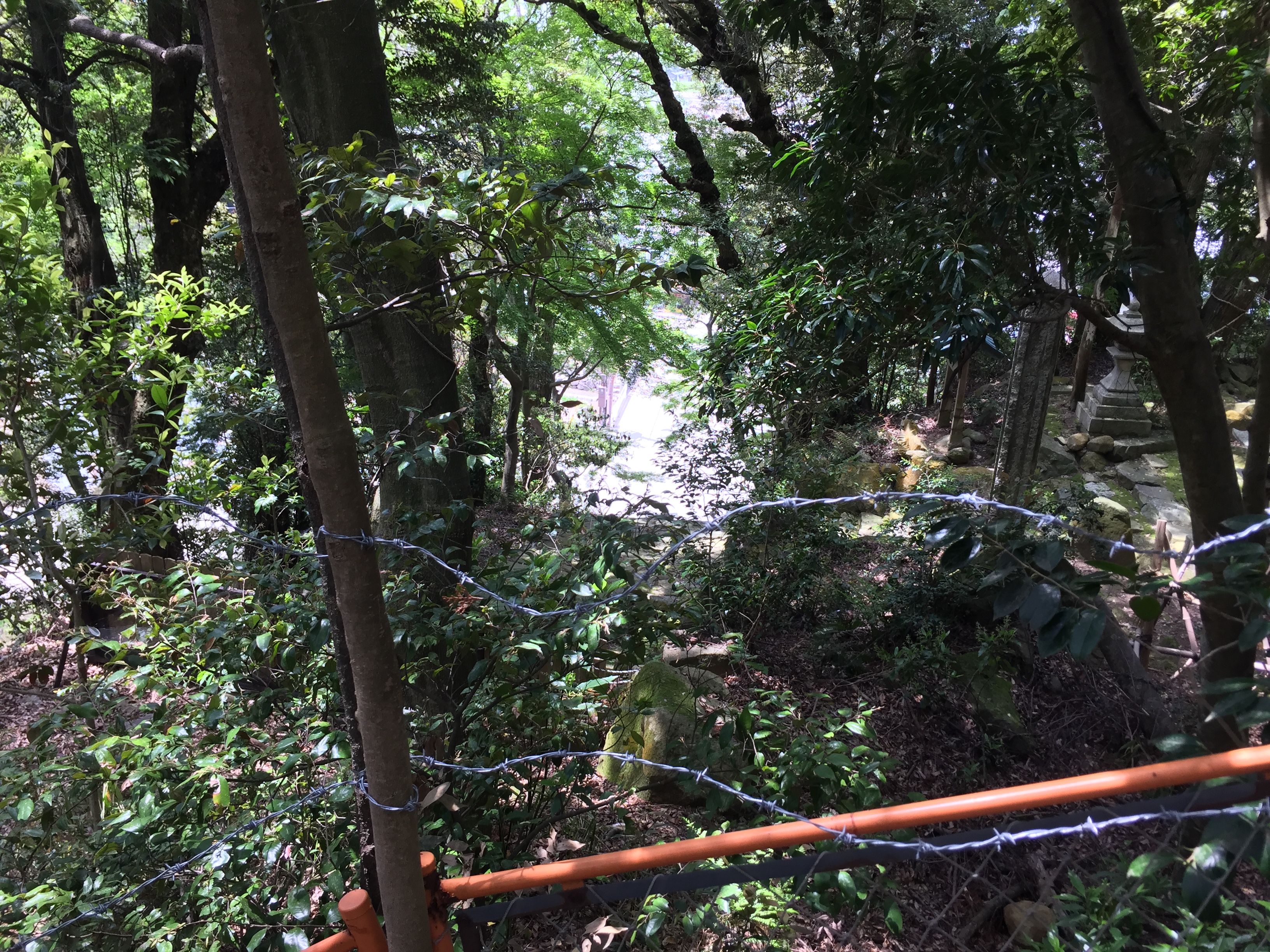
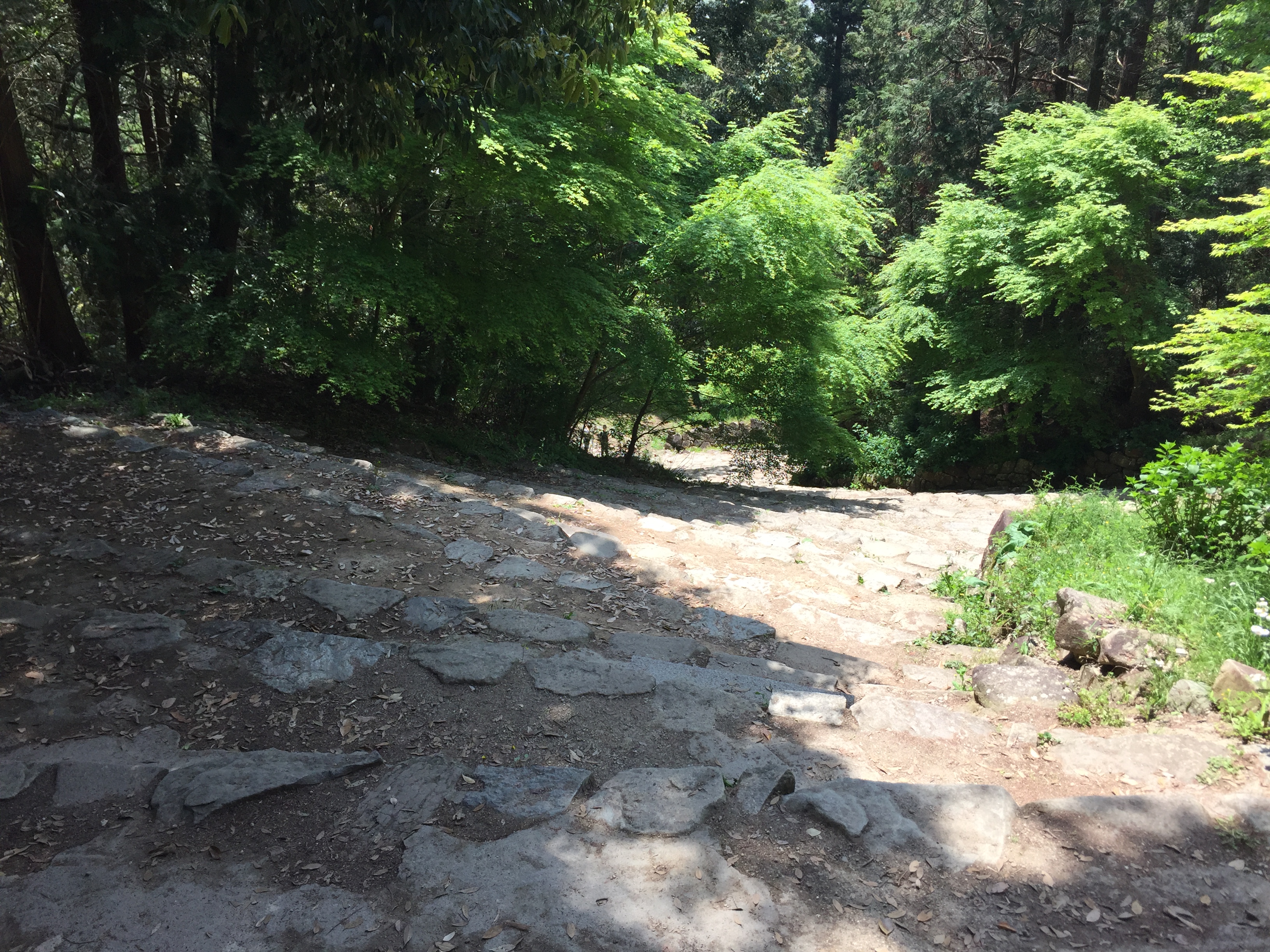
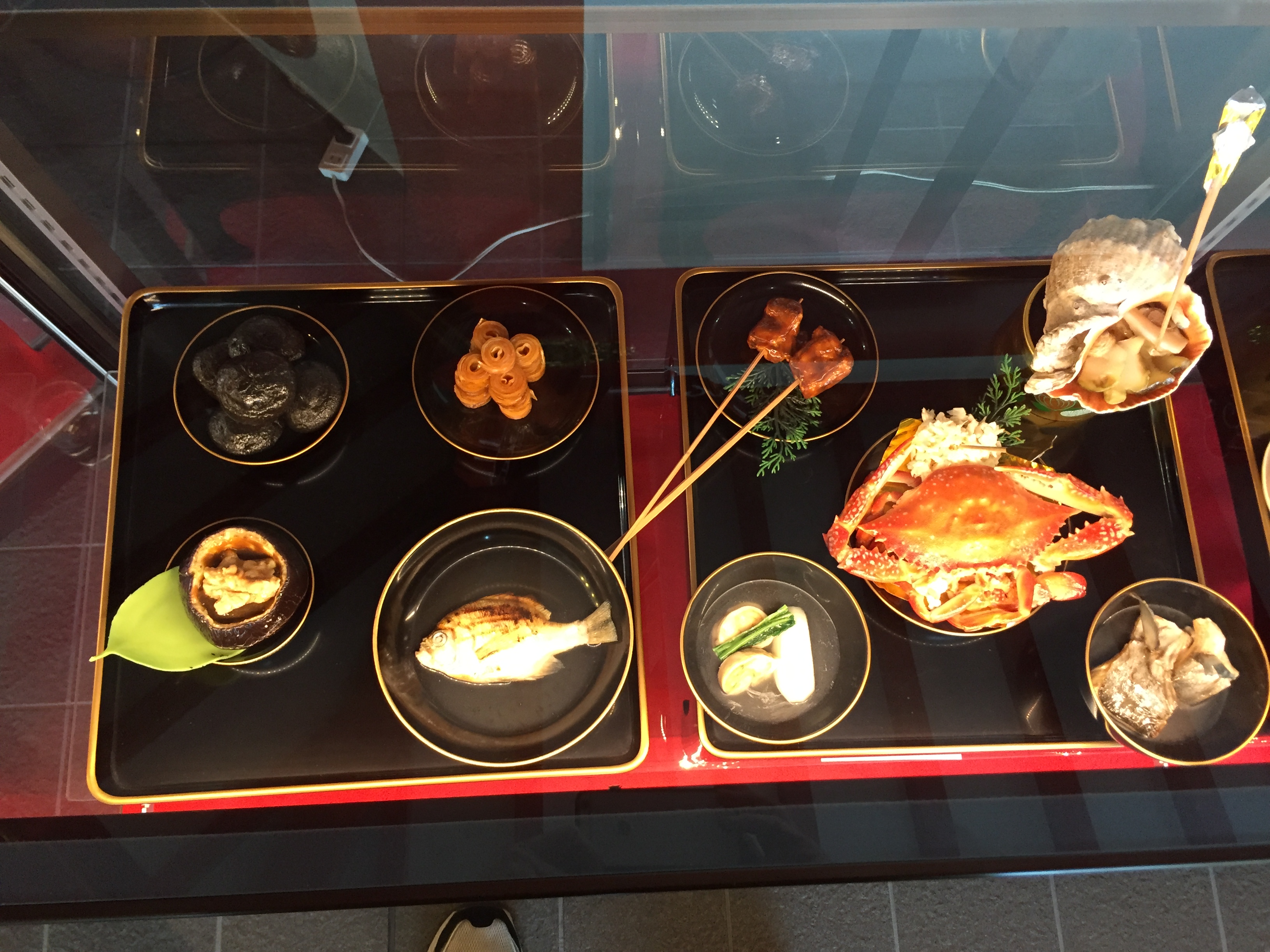
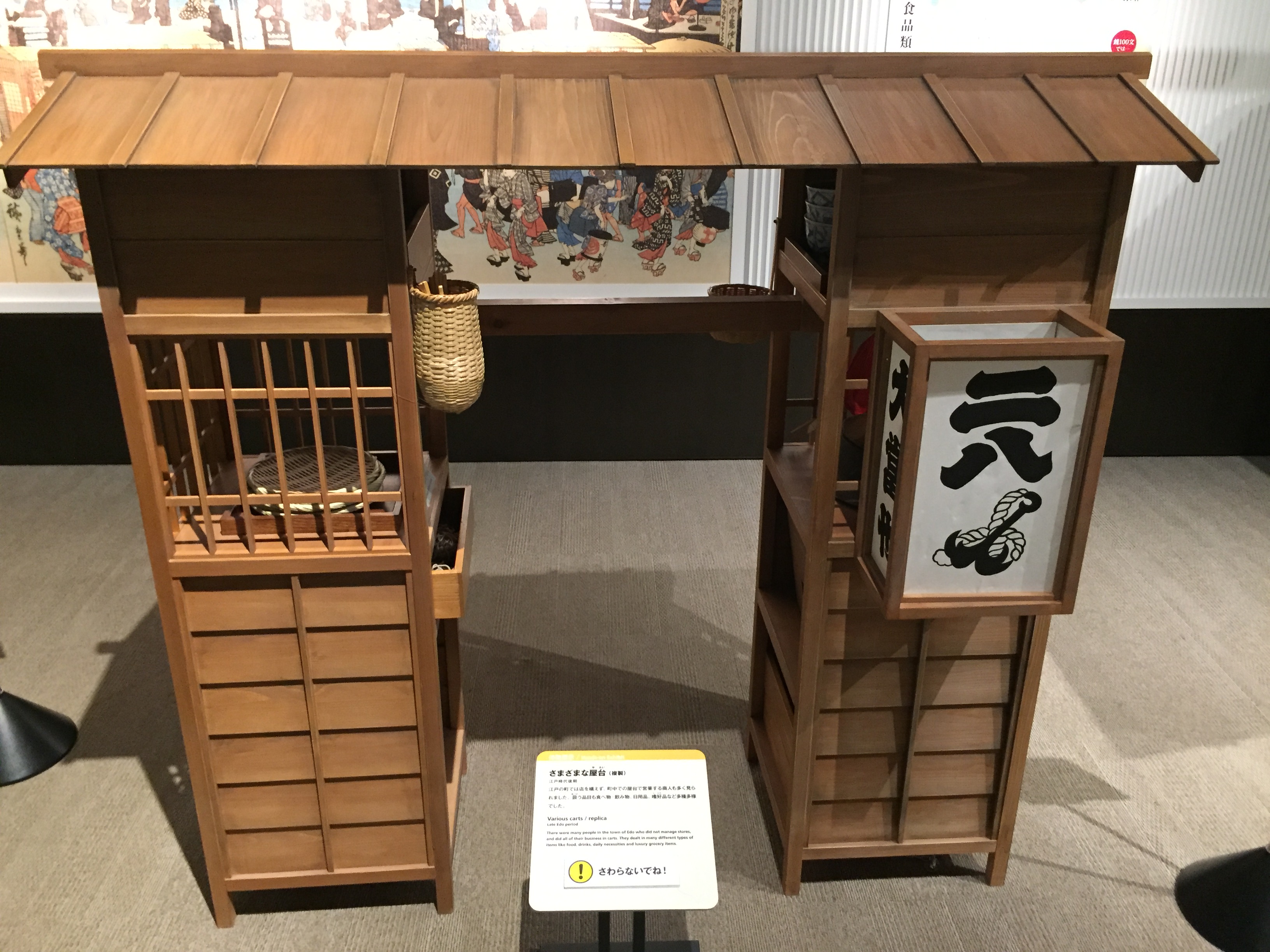
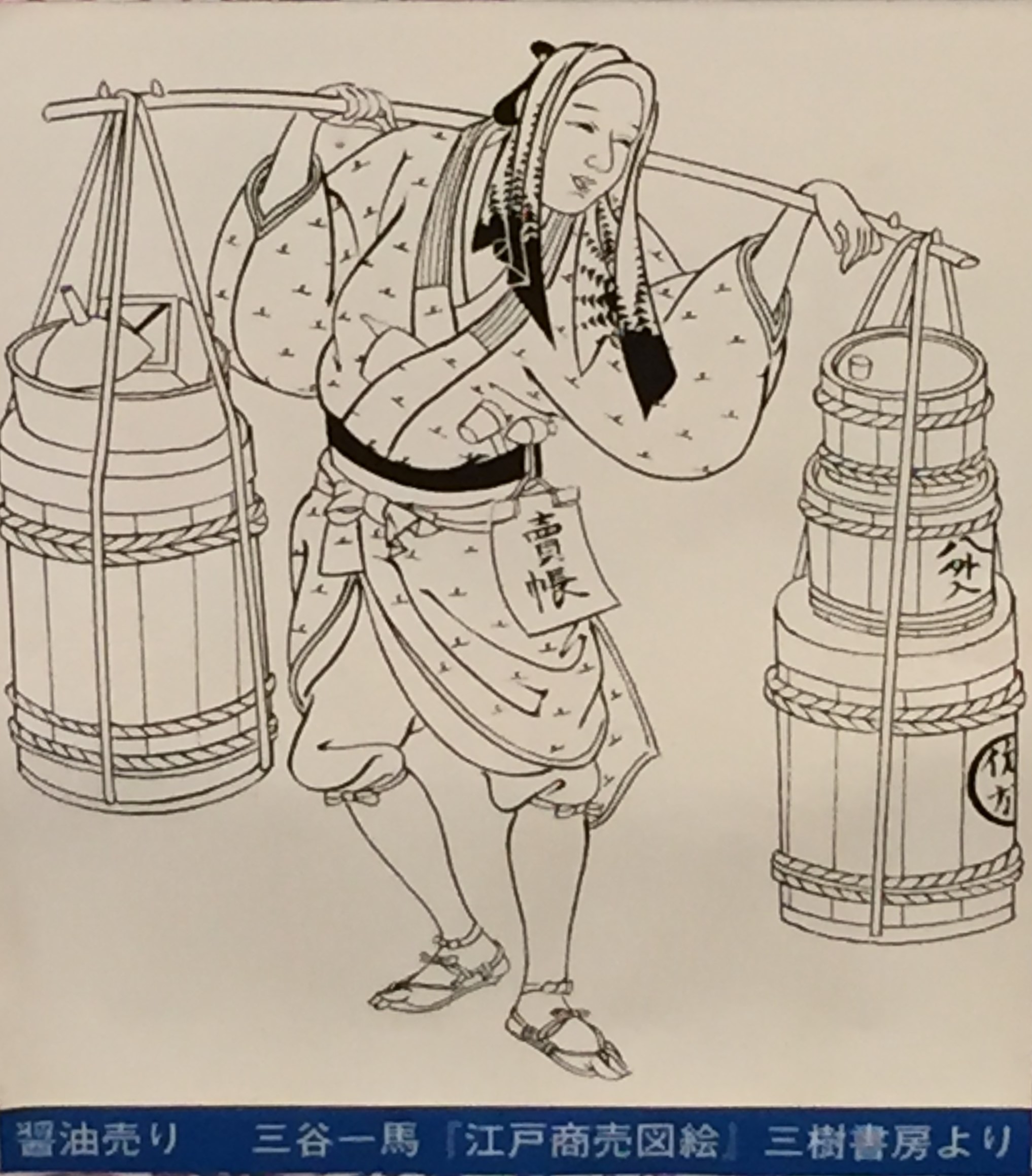
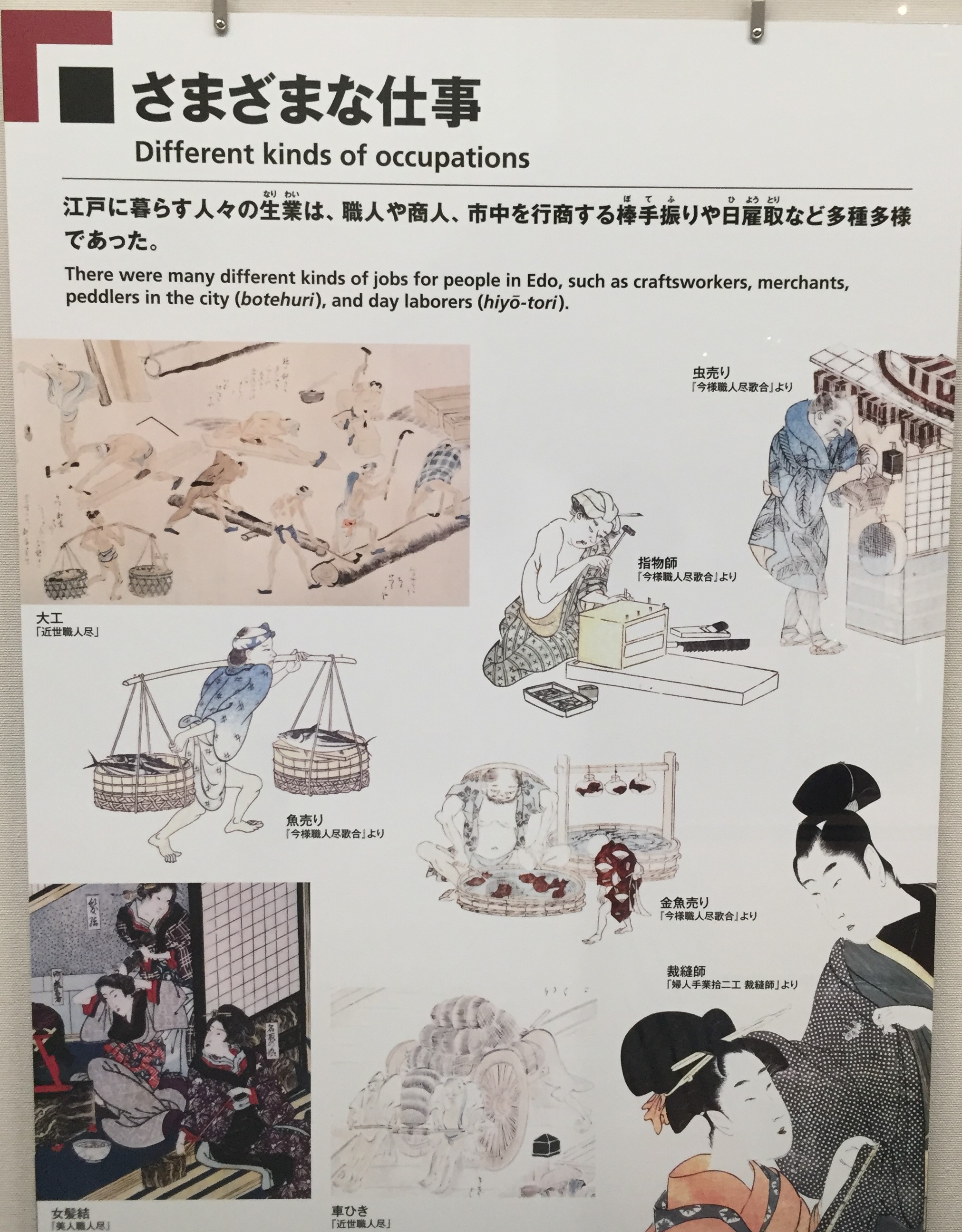
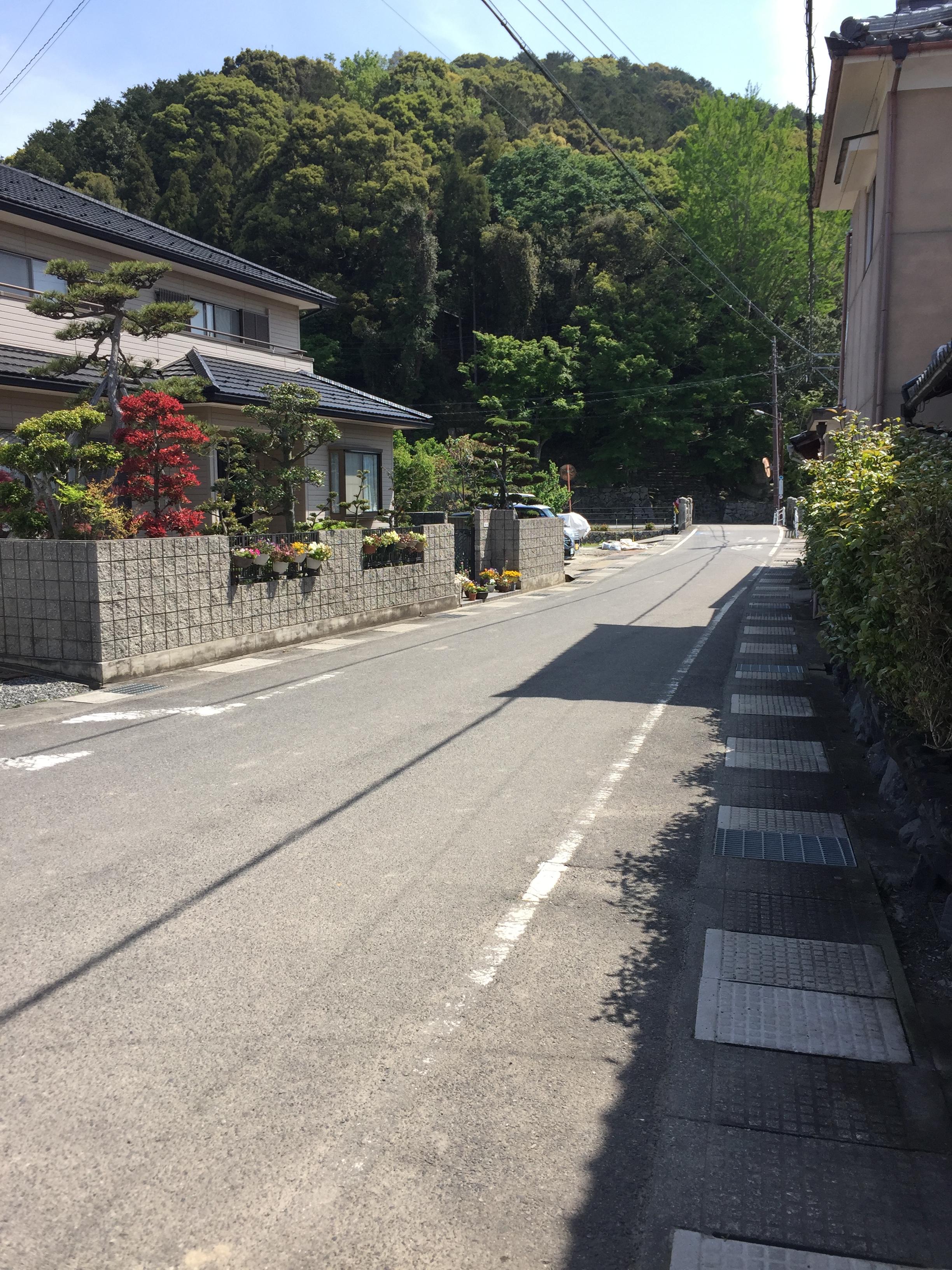 Walking through the streets of Azuchi Town toward the southwest point of the mountain, Azuchi Castle is high in the sky at the top. The town ends at the edge of the moat which has been dug along the base of the mountain and is fed by Lake Biwa to your left. If you turn right, the road follows the moat around the mountain to the castle’s main entrance: Ōtemon (see last week’s “Azuchi Castle: Arriving via the Ōtemichi”).
Walking through the streets of Azuchi Town toward the southwest point of the mountain, Azuchi Castle is high in the sky at the top. The town ends at the edge of the moat which has been dug along the base of the mountain and is fed by Lake Biwa to your left. If you turn right, the road follows the moat around the mountain to the castle’s main entrance: Ōtemon (see last week’s “Azuchi Castle: Arriving via the Ōtemichi”).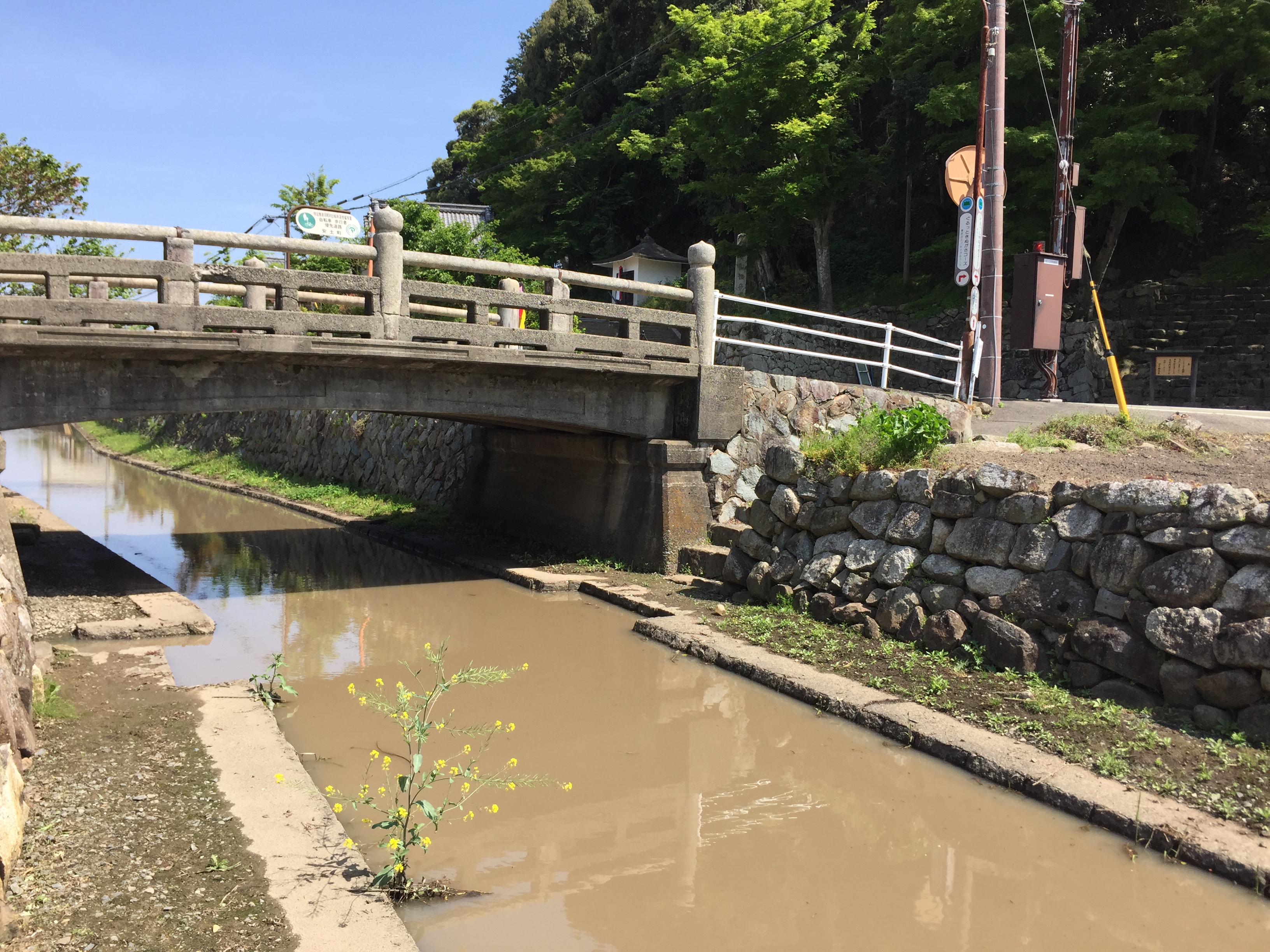 Crossing the Dodo bridge over the moat, you go up several stone steps to the Dodobashiguchi (literally, the Dodo Bridge entrance).
Crossing the Dodo bridge over the moat, you go up several stone steps to the Dodobashiguchi (literally, the Dodo Bridge entrance).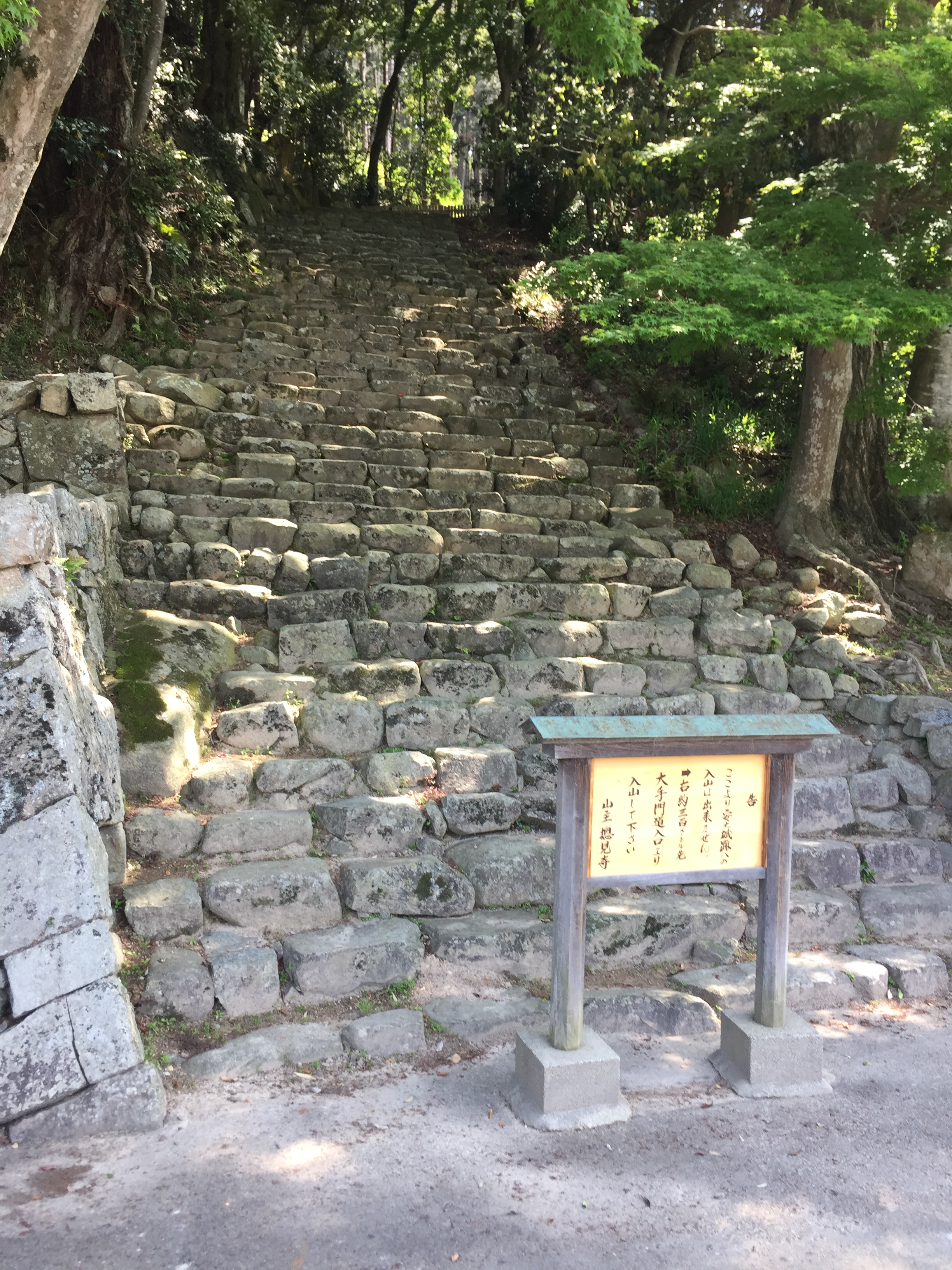 Once through the gate, you turn left onto Dodobashiguchi-michi. The “guchi” part, or entrance, is usually dropped from the name of the road itself—hence, it is the Dodobashimichi.
Once through the gate, you turn left onto Dodobashiguchi-michi. The “guchi” part, or entrance, is usually dropped from the name of the road itself—hence, it is the Dodobashimichi.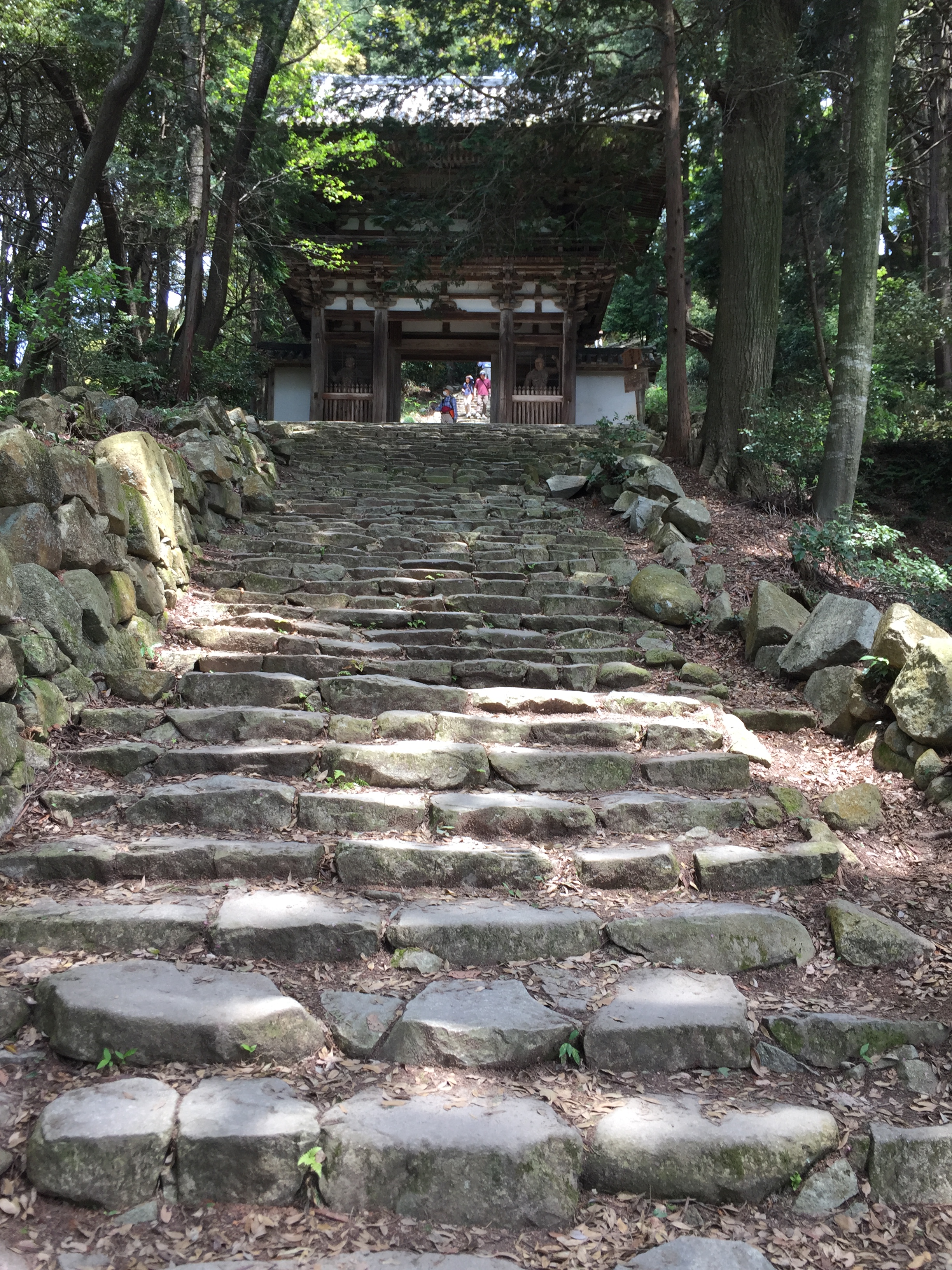 Almost immediately, as with the Ōtemichi, the slope becomes steep and you head straight up a long stretch of steps. From the bottom, it looks like you are climbing all the way to the heavens (much like what you see at the bottom of the stairs leading up Aztec and Mayan pyramids).
Almost immediately, as with the Ōtemichi, the slope becomes steep and you head straight up a long stretch of steps. From the bottom, it looks like you are climbing all the way to the heavens (much like what you see at the bottom of the stairs leading up Aztec and Mayan pyramids).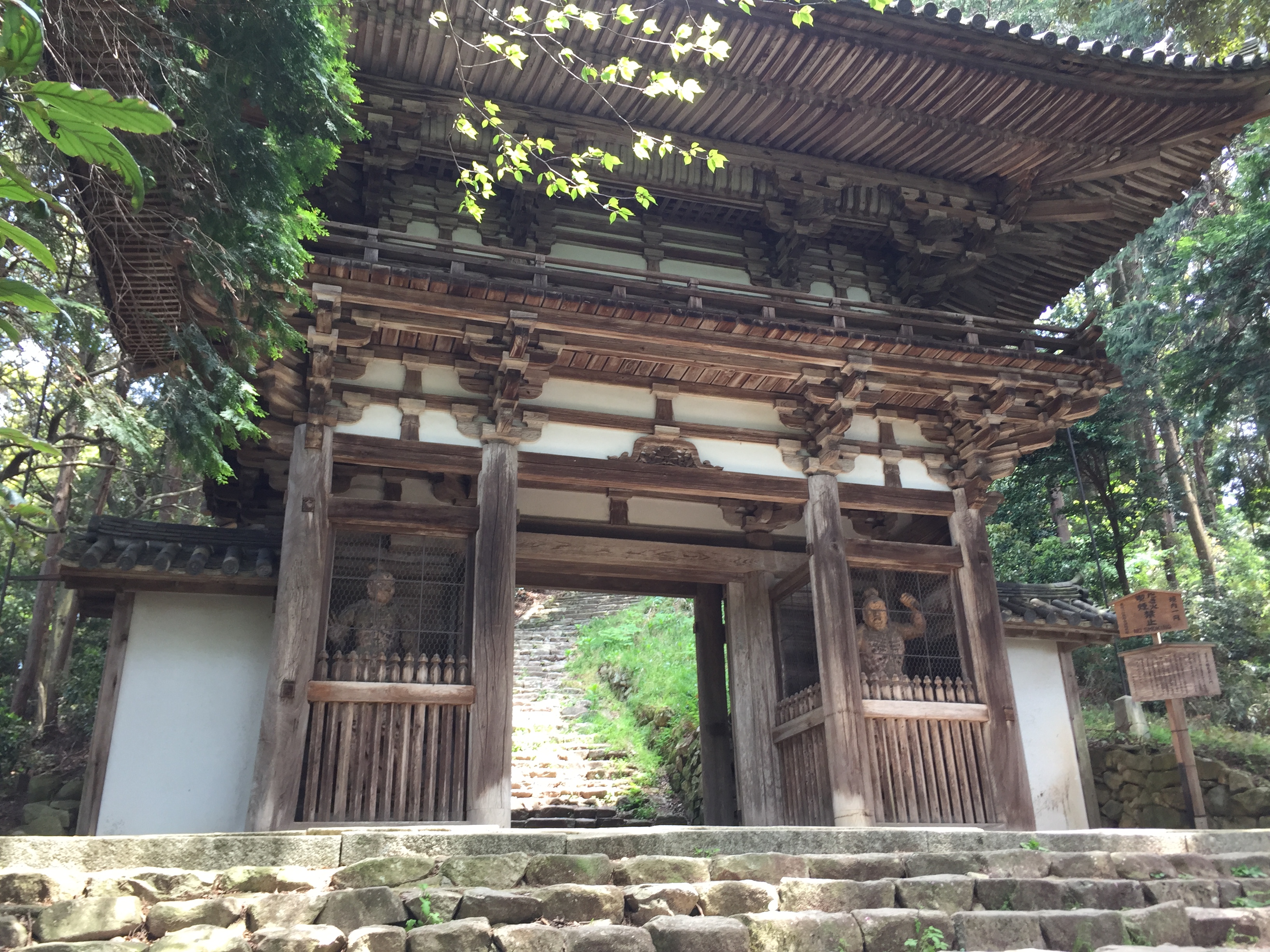
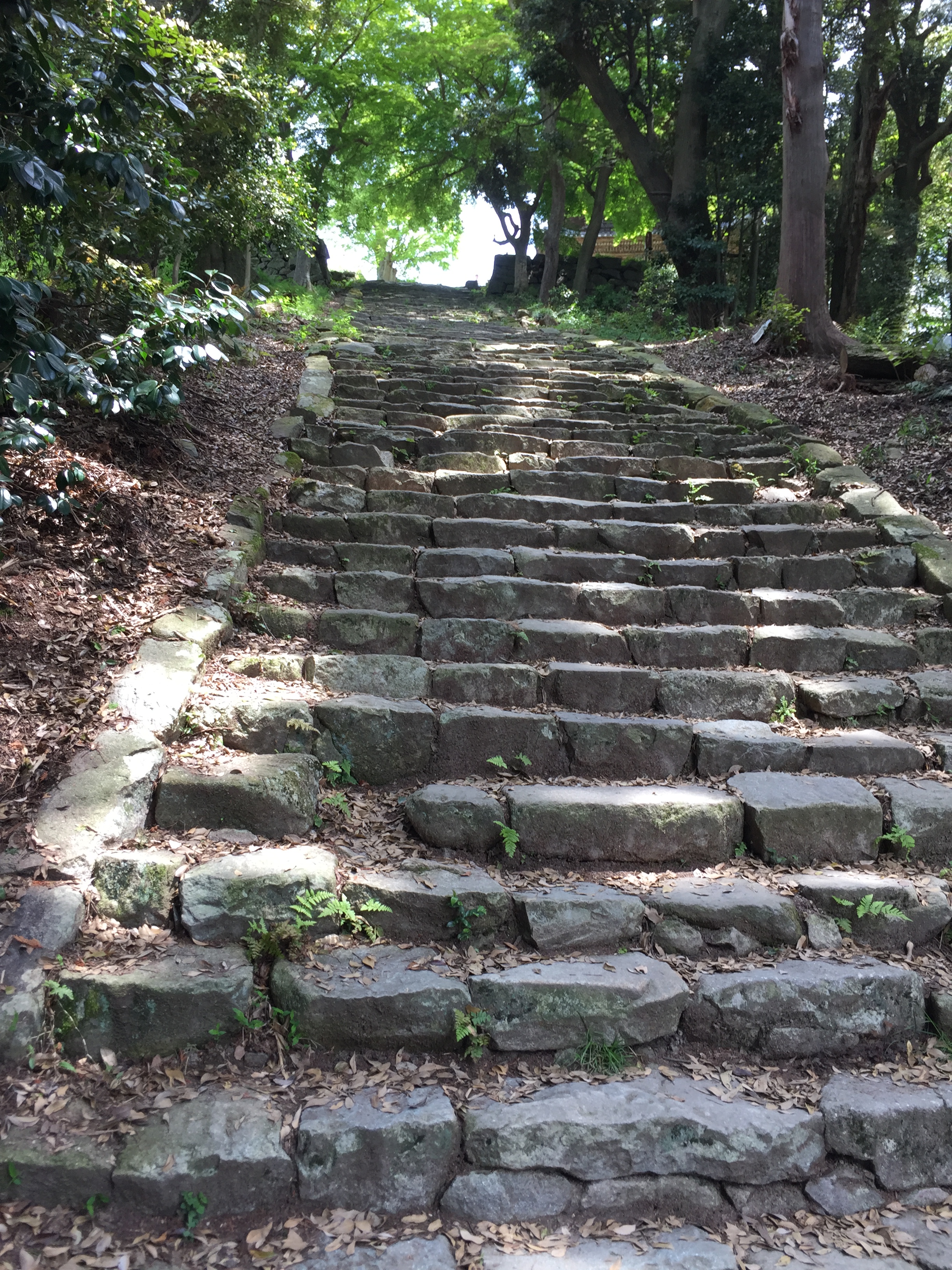
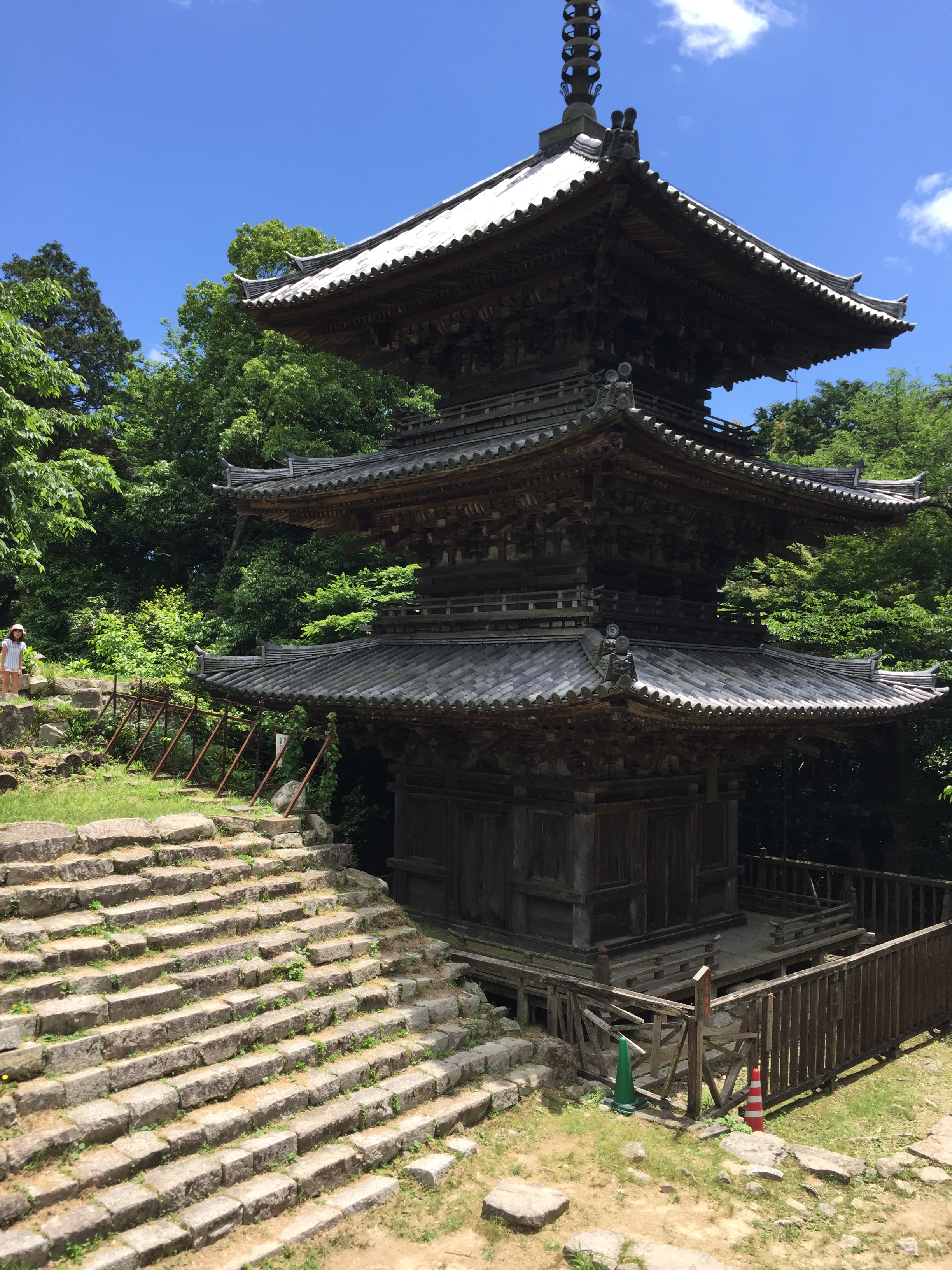
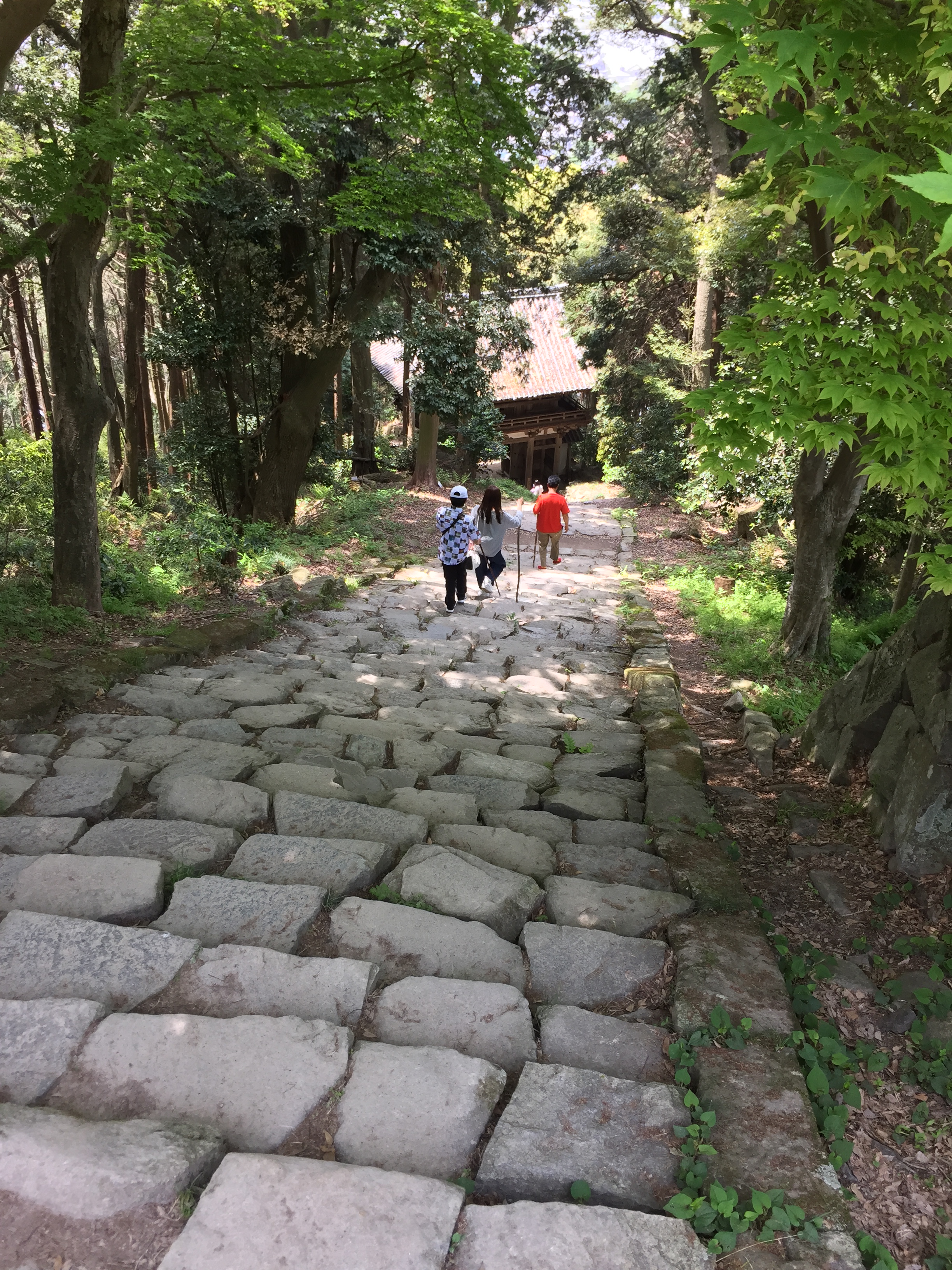

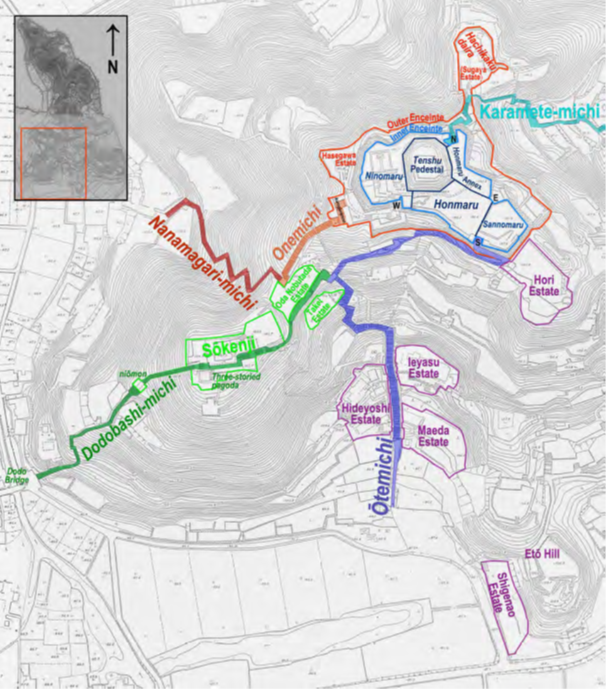
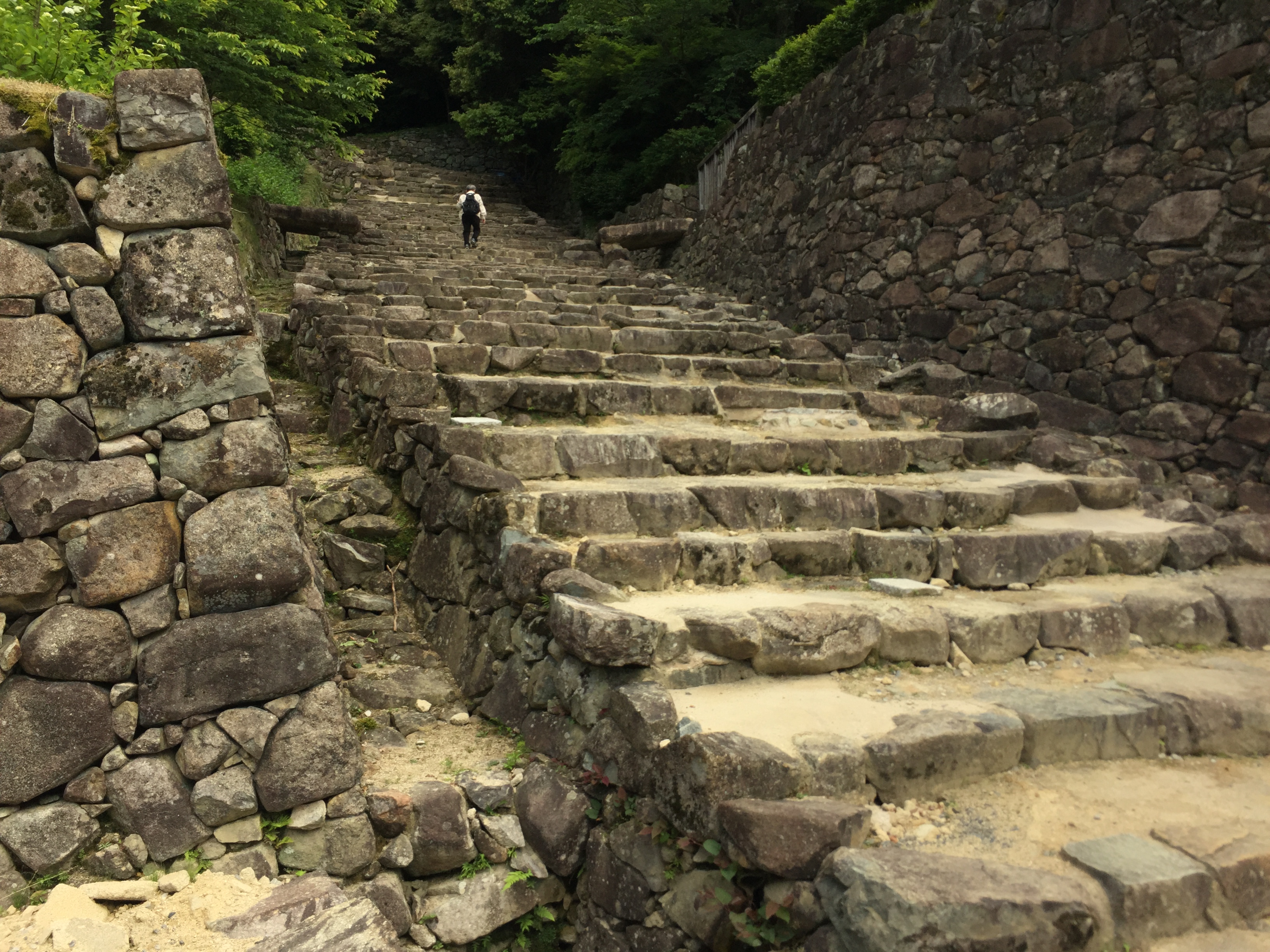
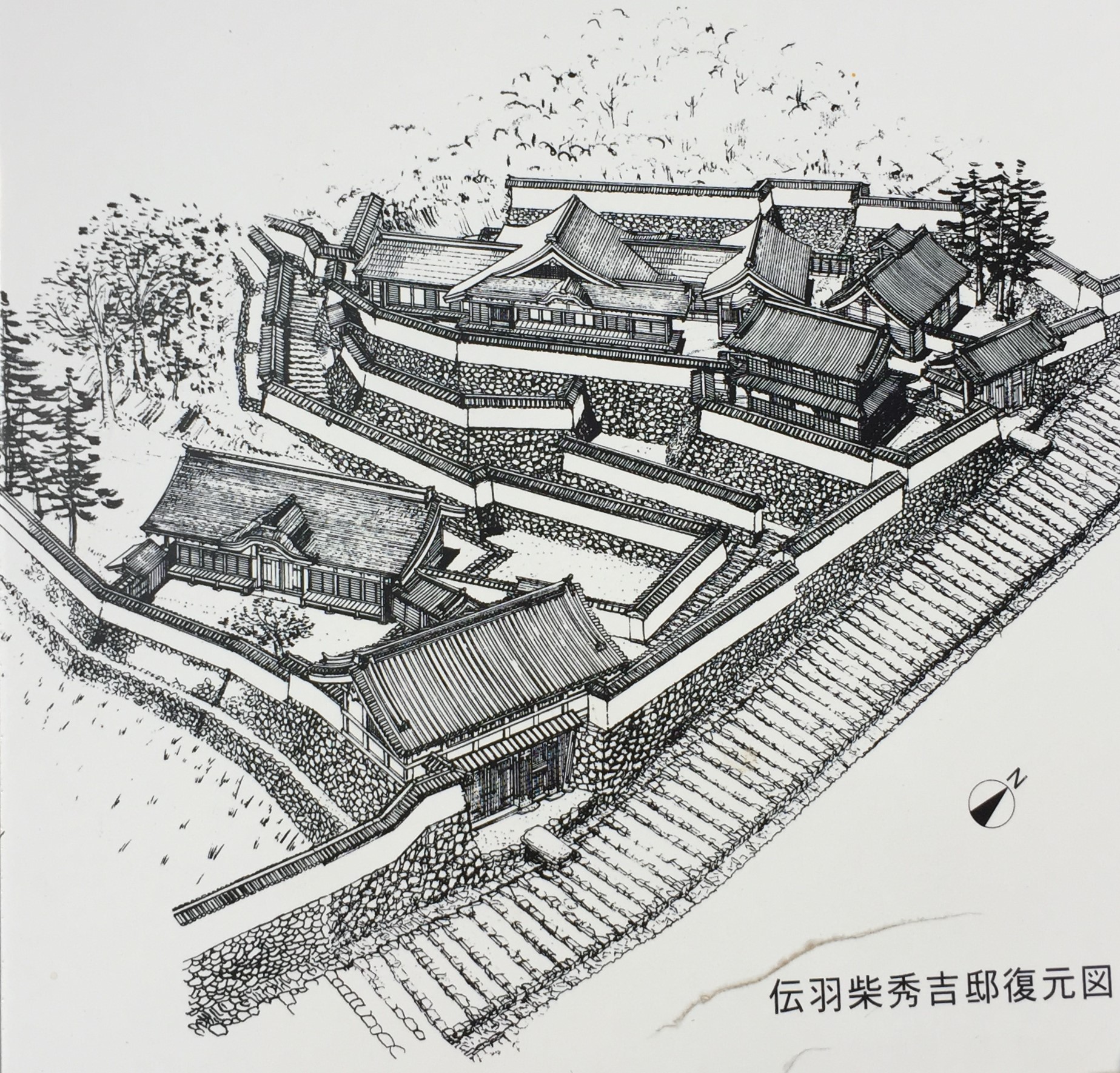
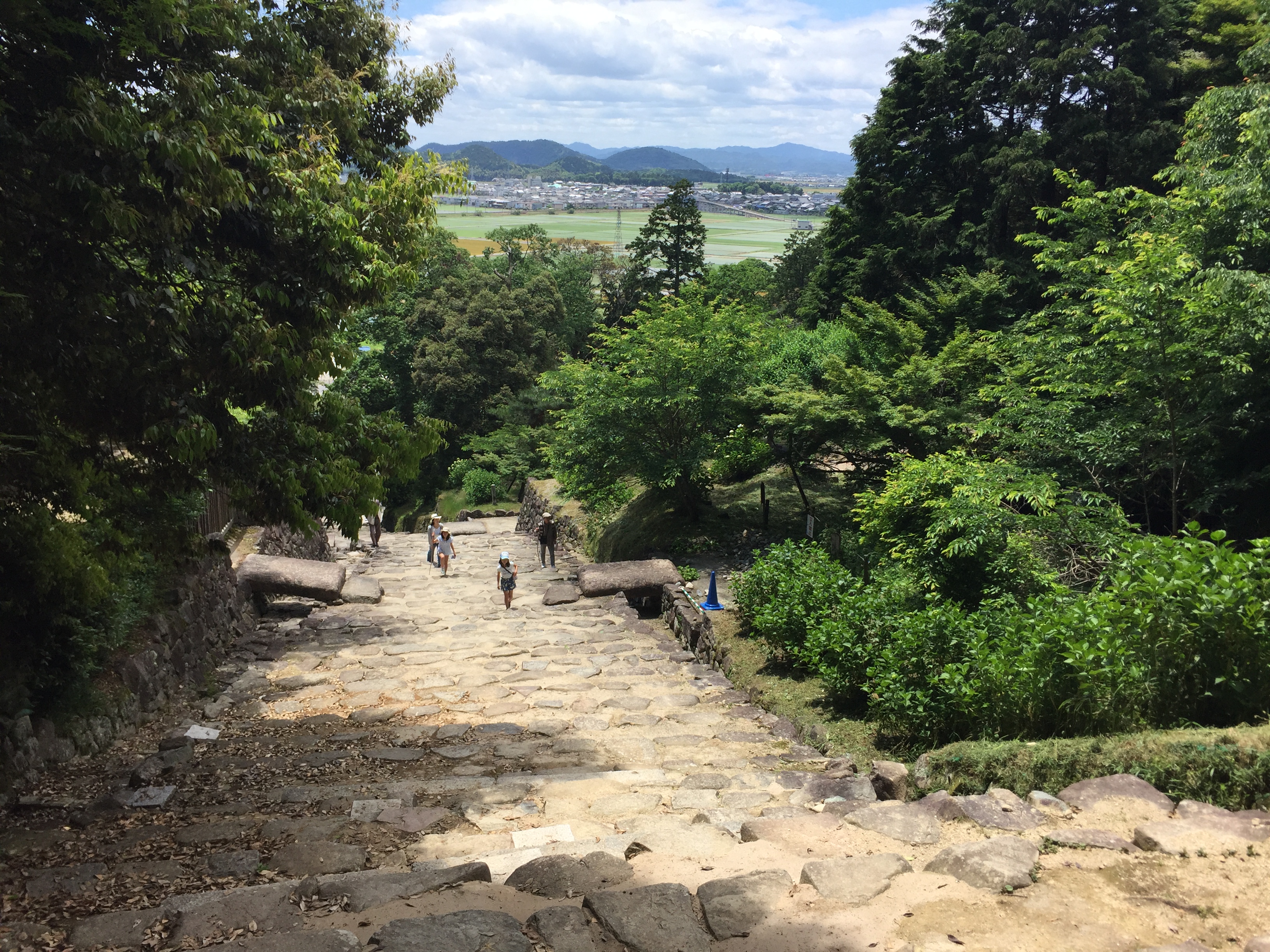
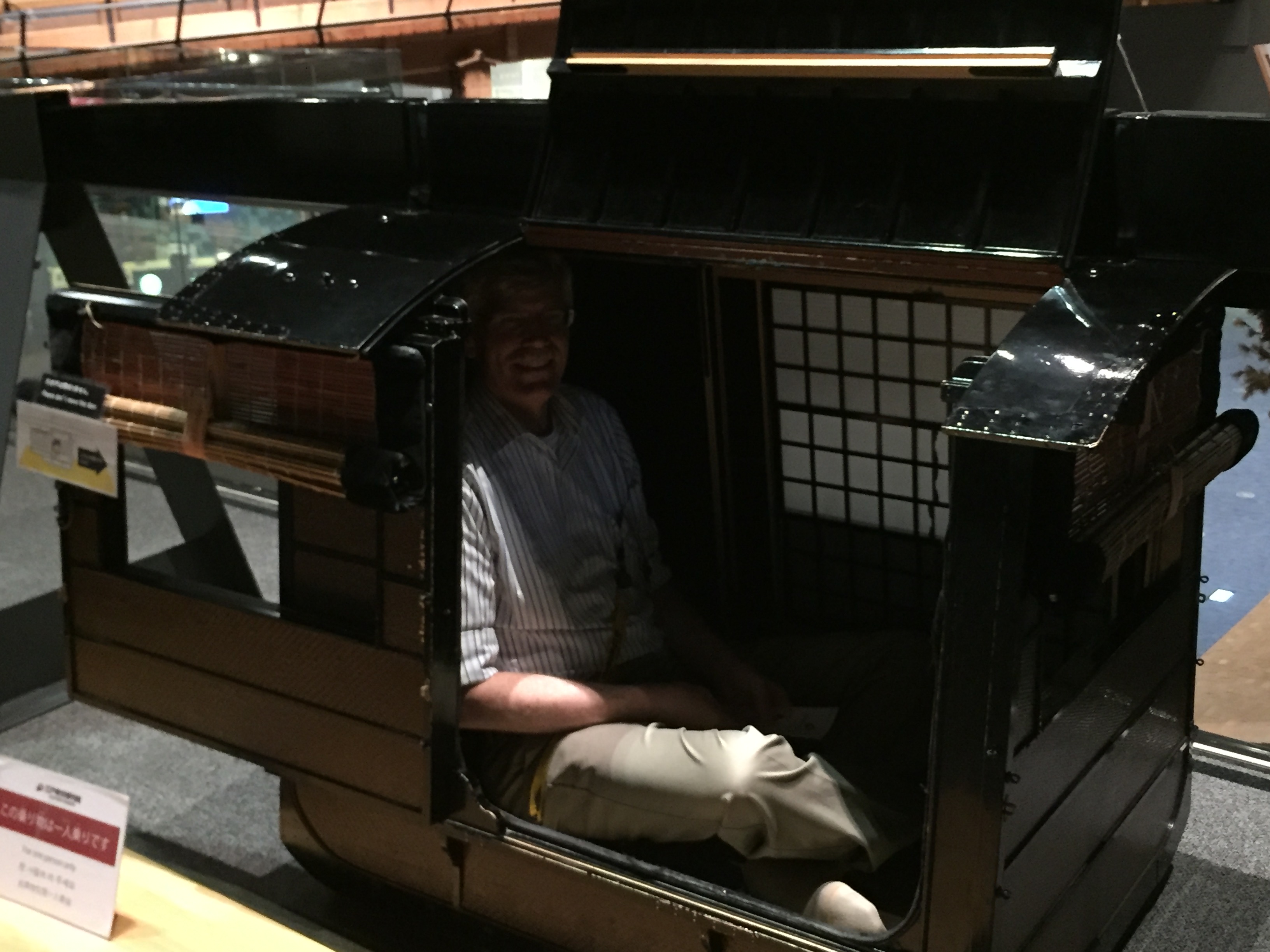
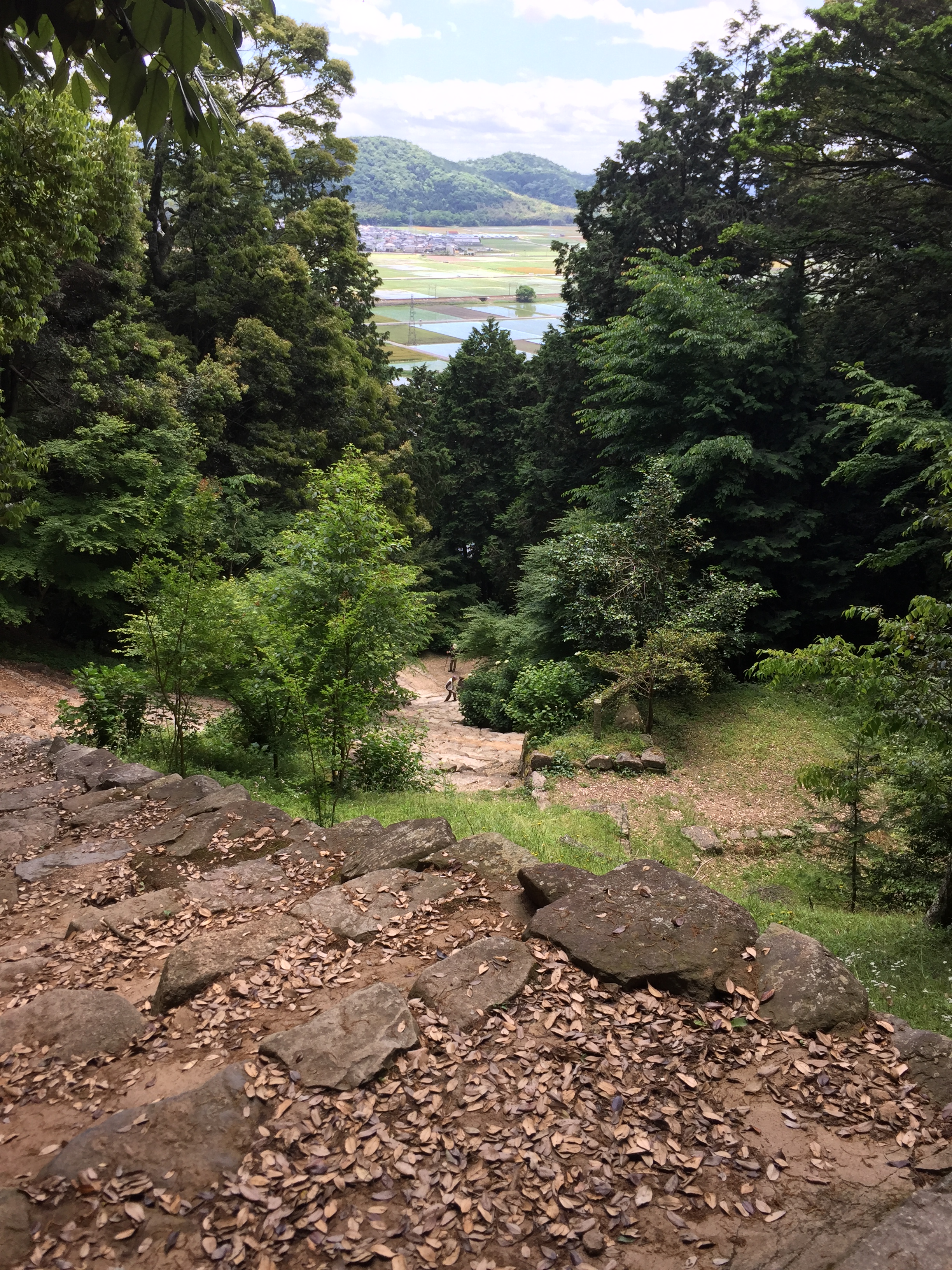
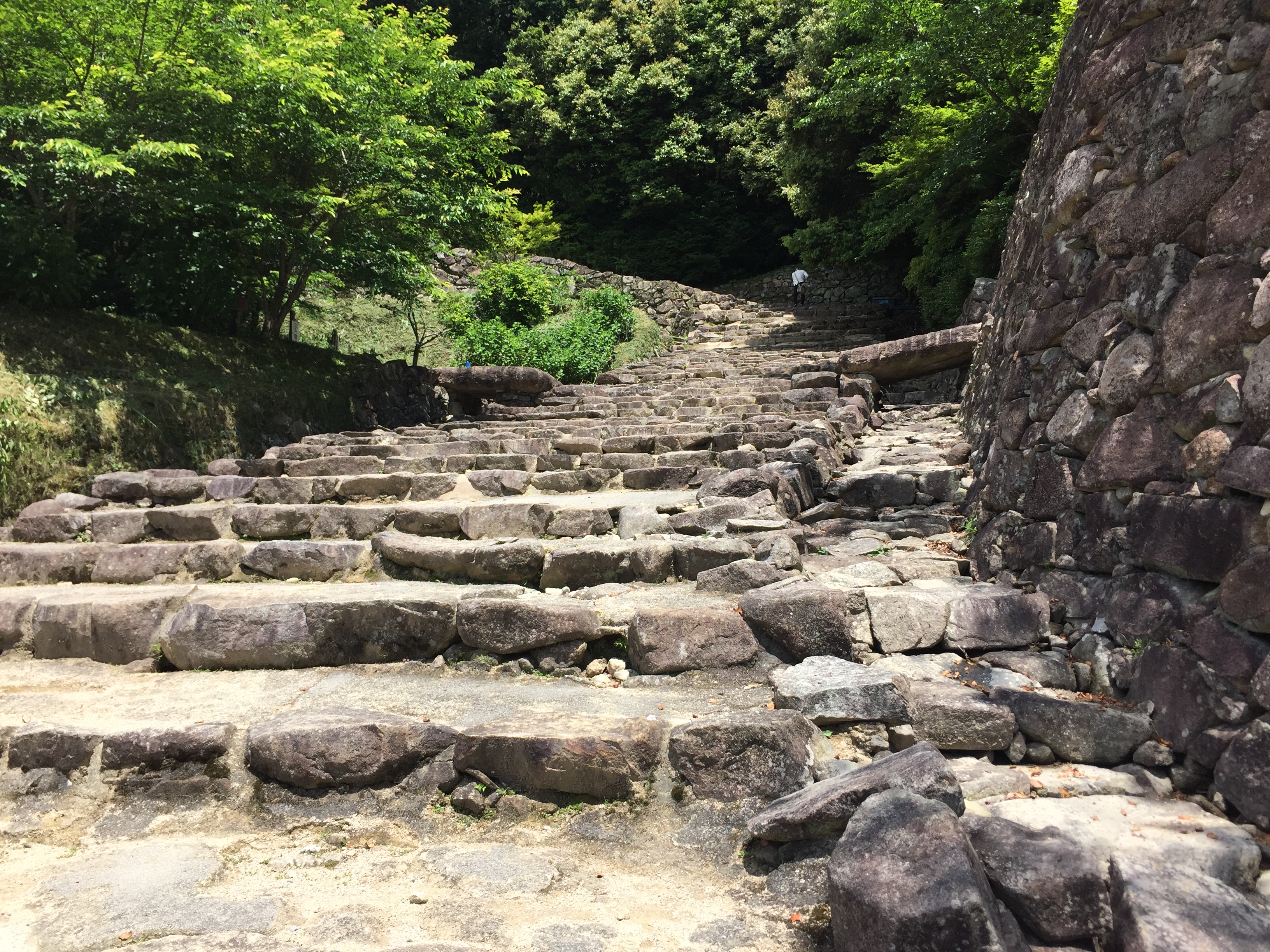 At the top of the long straight portion, Ōtemichi angles to the left until it connects with the Dodobashimichi coming up from
At the top of the long straight portion, Ōtemichi angles to the left until it connects with the Dodobashimichi coming up from 